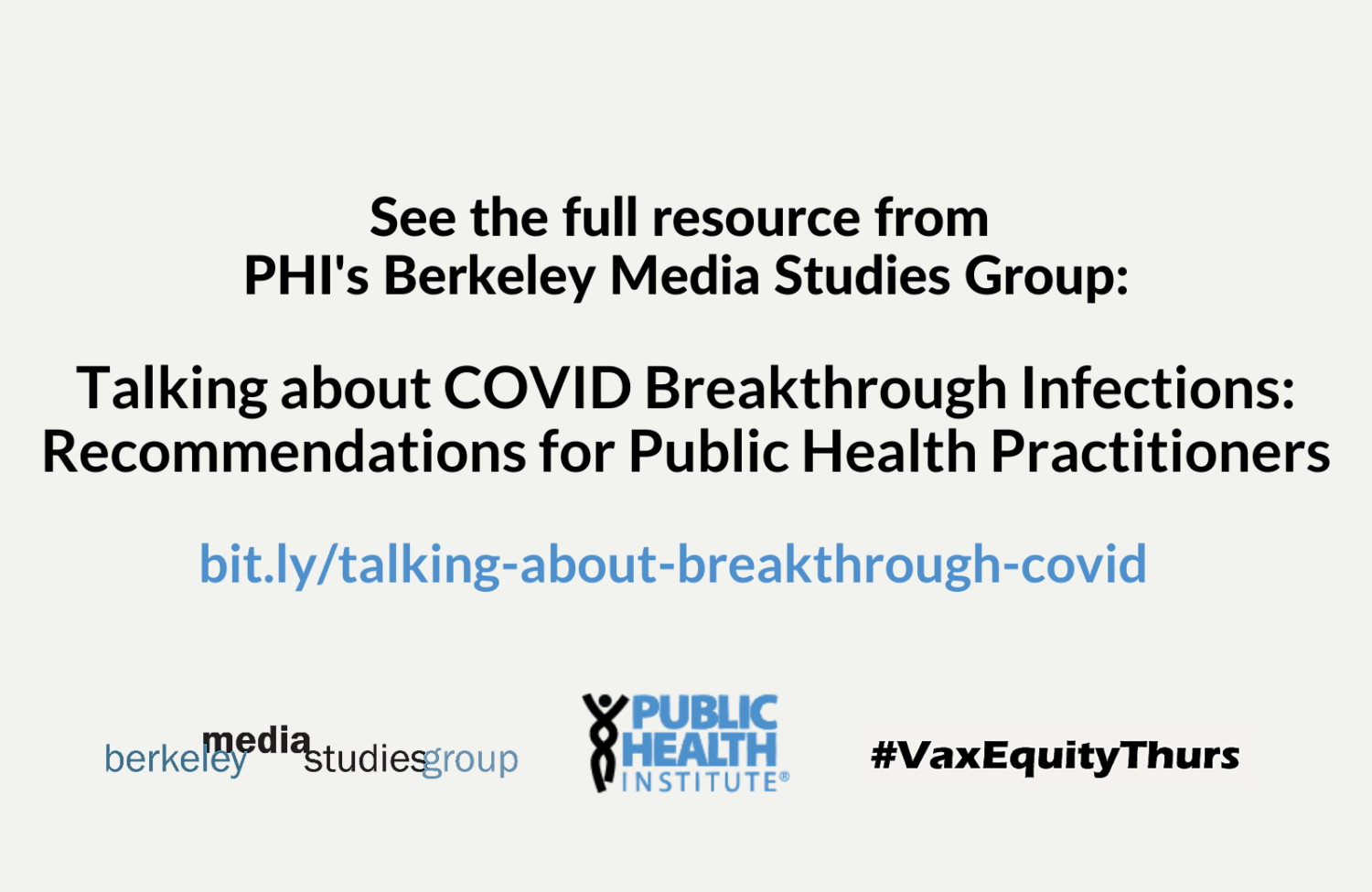
Vaccine Equity Strategy Series: Concrete Best Practices and Ideas for Communities
-
Focus Areas
Capacity Building & Leadership, Communicable Disease Prevention -
Strategic Initiatives
COVID-19, Vaccine Access & Equity
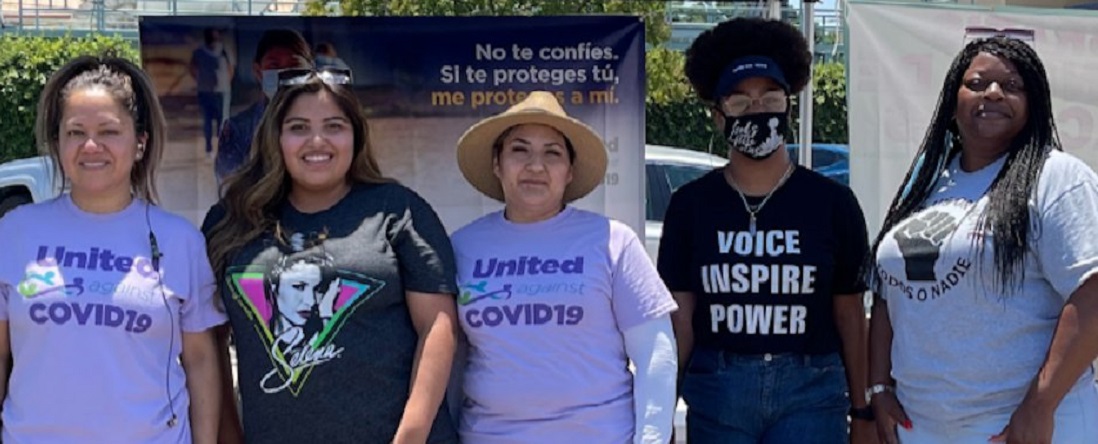
PHI’s Vaccine Equity Strategy Series provides short, actionable advice and best practices to guide your community’s efforts to advance vaccine access and equity. Pulled from on-the-ground experiences, these quick tips lift up local voices and experiences to provide ideas and inspiration that can support equitable vaccination roll-out—with an emphasis on working collaboratively alongside communities most impacted by COVID-19.
Browse and share our Twitter threads or scroll down to directly access our video clips, slides and other resources:
- Strategy: Help people sort through COVID misinformation to build vaccine confidence
- Strategy: Provide free transportation for people with disabilities
- Strategy: Map out vaccination sites to create accessible, conducive spaces for older individuals
- Strategy: Invest in youth leadership
- Strategy: Share a personal story of overcoming a vaccine barrier
- Strategy: Have onsite ASL interpreters and ensure easy access to interpreting app devices
- Strategy: Integrate a trauma informed approach into COVID-19 vaccine equity efforts
- Strategy: Create and distribute materials in primary languages
- Strategy: Create gender-affirming spaces for transgender, gender nonconforming and gender nonbinary people
- Strategy: Use a ‘truth sandwich’ to answer questions about breakthrough infections
- Strategy: Schedule COVID-19 vaccine appointments for the non-tech savvy
- Strategy: Bring vaccine clinics directly to workplaces
Strategy: Help people sort through COVID-19 misinformation to build vaccine confidence
People generally want to make the best decisions they can to keep their families and communities safe from COVID-19, but there is a lot of conflicting information about how to do that. Acknowledge that it’s okay to have questions or be confused, and speak from your own experiences in decided to get vaccinated. You can also provide a quick checklist to help people determine whether information is credible, like: Is the source reputable? Are citations included? Is the information current?
Watch the video, read the thread and watch the full video from PHI’s Berkeley Media Studies Group: Illuminating the context for access and hesitancy.
Strategy: Provide free transportation for people with disabilities
Working with local transit agencies and other partners to provide free transportation to and from vaccine clinics can increase accessibility for people with disabilities, seniors, and people with limited access to reliable transportation or the time to travel to/from sites.
Read and share our full Twitter thread, or watch the full webinar recording from PHI’s Pacific ADA Center: Disability Inclusion and Considerations in Vaccination Centers and Operations
Strategy: Map out vaccination sites
Mapping out vaccine sites can create accessible, conducive spaces for older adults and increase accessibility for some people with disabilities and certain underlying health conditions. See the steps taken to increase accessibility at vaccination sites in St. Louis.
Watch the video (above), read the thread and watch the full video from PHI’s Public Health Alliance of Southern California: Intra-Governmental Partnerships to Reach City of St. Louis Housing Authority Residents.
Strategy: Invest in youth leadership
Young people critical messengers in reaching their peers, family and entire communities with information about COVID-19 safety and vaccines. Find tips for how to engage with youth in your vaccine equity efforts and learn about the Promoteritos model, a first-of-its-kind program in Fresno, CA that trains high school students to be junior community health workers to increase access to COVID-19 vaccines.
Explore the slides (above), read the full thread, and learn more in “Meet the Fresno teens who are fighting COVID misinformation in the Latino community.”
Strategy: Share a personal story of overcoming a vaccine barrier
As the Delta variant surges, it’s more critical than ever to communicate about vaccines in ways that foster trust. We not only need to give people access to vaccines in places they trust, but we also need to deliver accurate information through trusted messengers. Sharing personal stories about how and why you made the decision to get vaccinated can help to connect with people and move them from vaccine hesitancy to vaccine confidence.
Watch the video (below), read the thread and watch the full Communicating About Vaccines video series from PHI’s Berkeley Media Studies Group.
Strategy: Provide onsite ASL interpreters and ensure easy access to interpreting app devices
Some people who go to vaccination centers need American Sign Language (ASL) interpreters to communicate. Vance Taylor, Chief of the Office of Access and Functional Needs at CAL OES, shares tips for how to create a more accessible vaccination site by providing onsite ASL interpreters and ensuring easy access to remote interpreting apps as a back-up option.
Read and share our full Twitter thread, or watch the full webinar recording from PHI’s Pacific ADA Center: Disability Inclusion and Considerations in Vaccination Centers and Operations
Strategy: Integrate a trauma informed approach into COVID-19 vaccine equity efforts
What does it mean to integrate trauma informed care into your COVID-19 response? See on-the-ground examples of how Together Toward Health grantee, the San Diego Refugee Communities Coalition, uses a trauma informed approach to connect immigrant and refugee communities with vaccines and resources—rooted in understanding, care, mutuality and empathy.
Explore the slides (below), read our full Twitter thread and the op-ed, “To vaccinate refugees, shame won’t work. Engagement that considers trauma will,” and learn more about Together Toward Health.
Strategy: Create and distribute materials in primary languages
Limited or lack of access to culturally-resonate, primary language information about COVID-19 and vaccines is a major barrier for communities. To help guide your efforts, see five key learnings and examples from our Together Toward Health initiative, which supports 400+ community-based organizations across California who serve as trusted experts for COVID-19 education, testing and vaccine access in their communities.
Explore the slides (below), read our full Twitter thread and learn more about Together Toward Health.
Strategy: Create gender-affirming spaces for transgender, gender nonconforming & gender nonbinary people
Many LGBTQ people—particularly transgender, gender nonconforming and gender nonbinary people of color—are faced with barriers in access and trust, tied to a history of discrimination within the medical system and a lack of safe, affirming spaces to receive necessary, quality medical care. See guidance on how to create gender-affirming spaces and processes in your vaccine equity efforts.
Read and share our full Twitter thread, or watch the full video from PHI’s Public Health Alliance of Southern California: Creating Safe and Affirming Spaces for Vaccine Distribution.
Strategy: Use a ‘truth sandwich’ to answer questions about breakthrough infections
See insights from our Berkeley Media Studies Group (BMSG) on how to talk about breakthrough infections without undermining critical health and safety messages, by using a ‘truth sandwich’ to answer questions about breakthrough infections.
Explore the slides (below), read our thread on Twitter and see BMSG’s full messaging guidelines.
Strategy: Schedule COVID-19 vaccine appointments for the non-tech savvy
The actual online process of signing up to receive a vaccine can be a major barrier for some folks—especially people who are unfamiliar with navigating online registration forms & processes, or don’t have reliable internet access. Older folks are often less tech savvy and are more likely to not have a home computer or internet access, especially in low income communities, rural communities & communities of color.
Read the full thread and watch the full Dialogue4Health Web Forum.
Strategy: Bring vaccine clinics directly to workplaces
A big barrier for many people is a lack of transportation to vaccine sites, and the inability to take time off work without losing income. If a site is far away and folks don’t have reliable transportation, it can take hours to simply get to an appointment & back again. This is especially true in rural places, for people who don’t have cars and rely on public transportation, and for communities with limited access to health care services & resources, including farmworkers.
Read the Twitter thread and watch the full video from PHI’s Public Health Alliance of Southern California: Multi-Sector, Community-Based Partnerships to Reach Farmworkers.
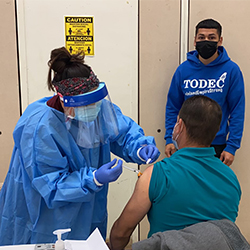
Tune in for #VaxEquityThurs for the latest tips in our Vaccine Equity Strategy Series
Join PHI on Twitter each Thursday at 10am PT / 1pm ET to find more ideas, examples and insights on how to increase access to vaccines. Join the conversation to find resources, share your ideas and let us know what's working on the ground in your community's efforts.
Follow along at #VaxEquityThurs, connect with us at @PHIdotorg, and tweet us or send a direct message with your questions and ideas for future topics.
Work With Us
You change the world. We do the rest. Explore fiscal sponsorship at PHI.
Support Us
Together, we can accelerate our response to public health’s most critical issues.
Find Employment
Begin your career at the Public Health Institute.
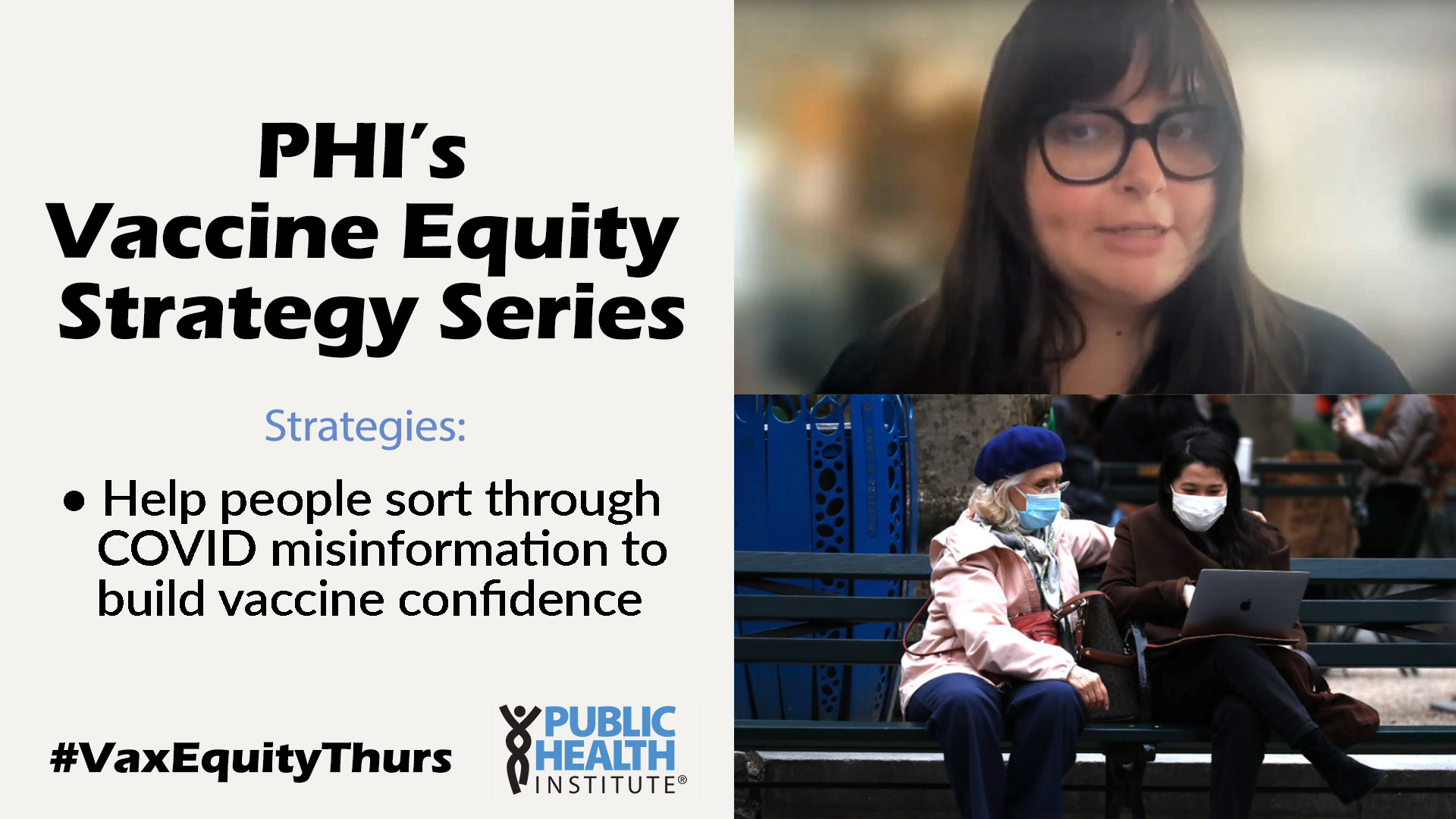
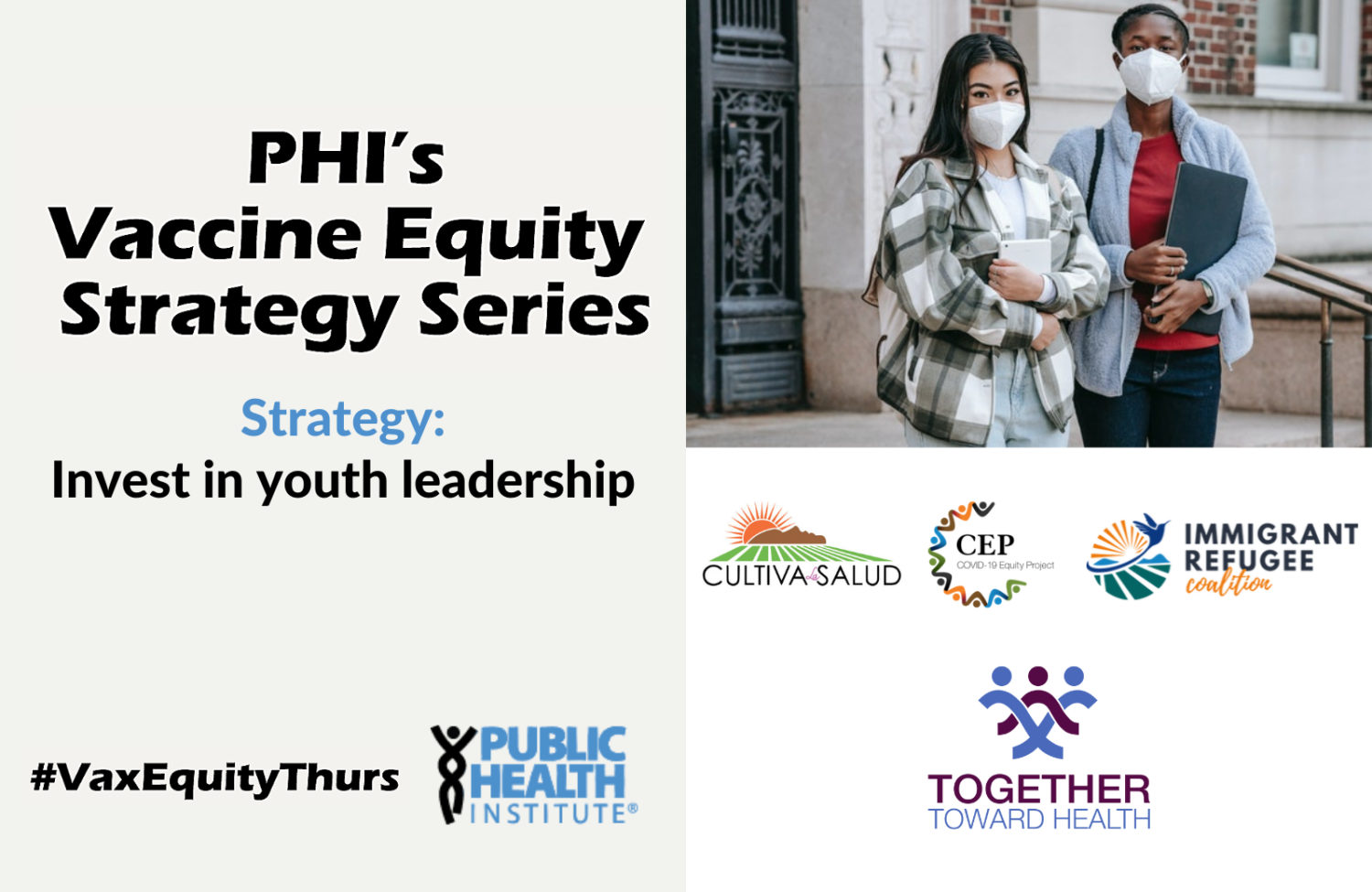
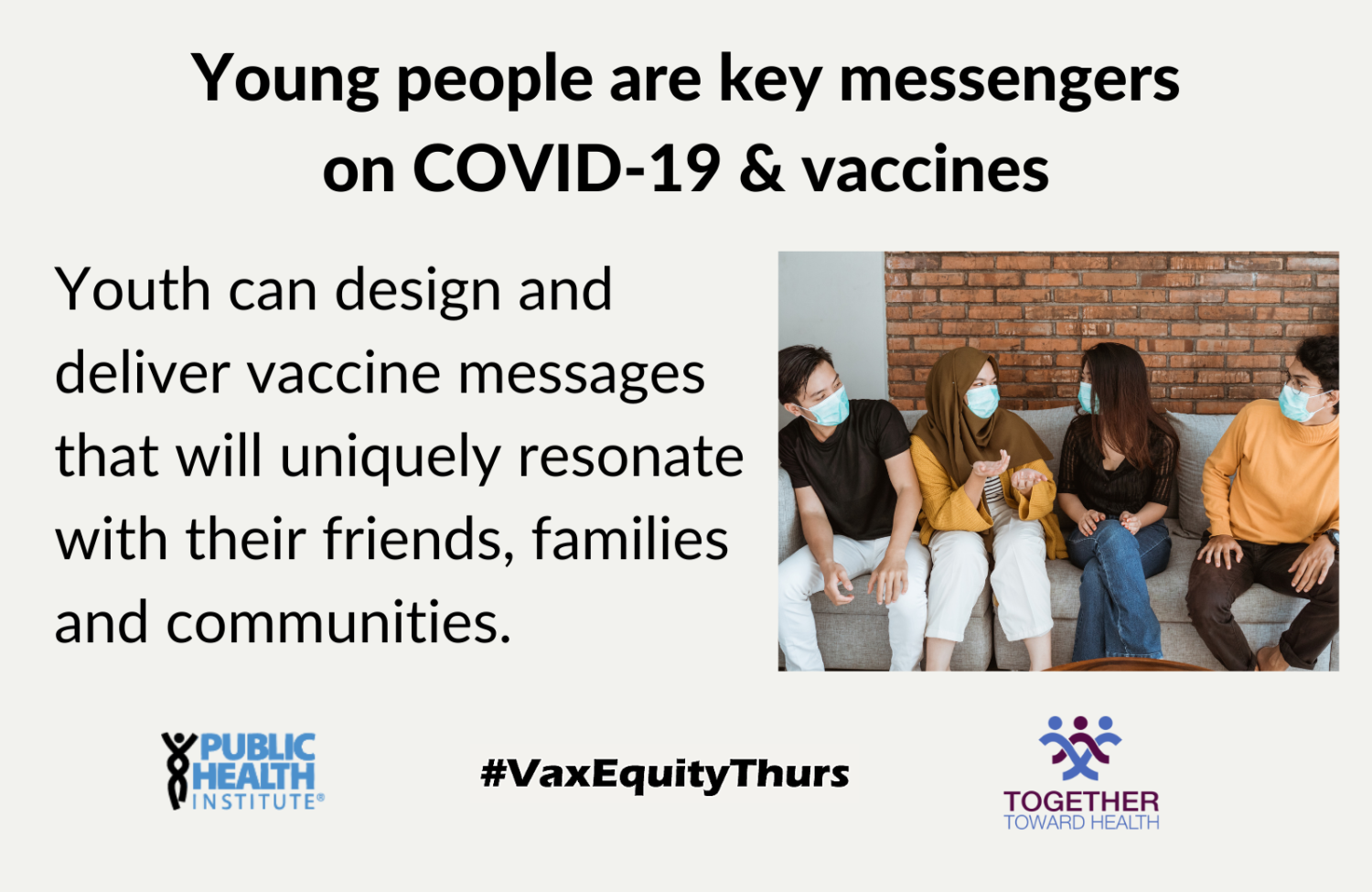
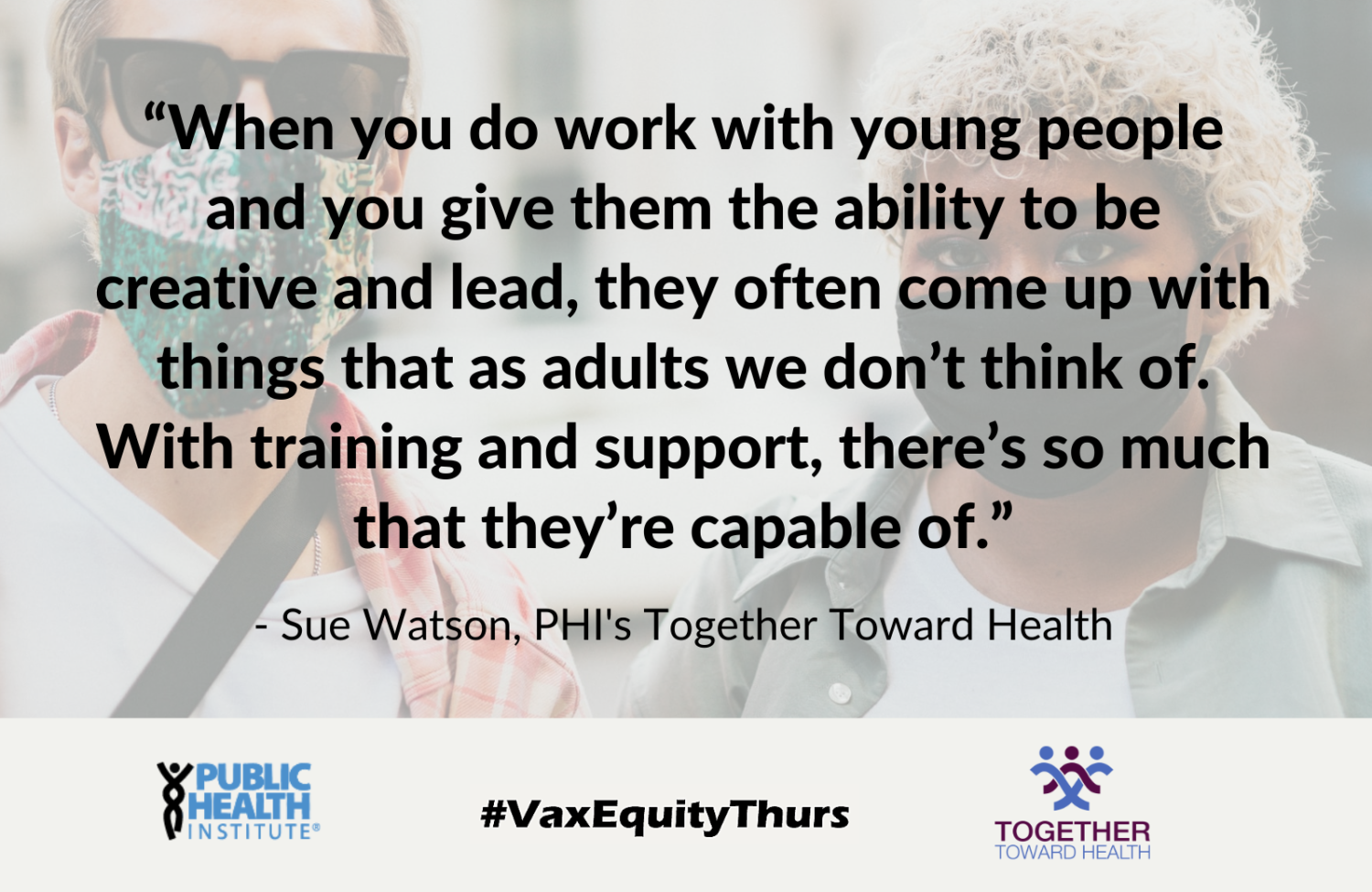
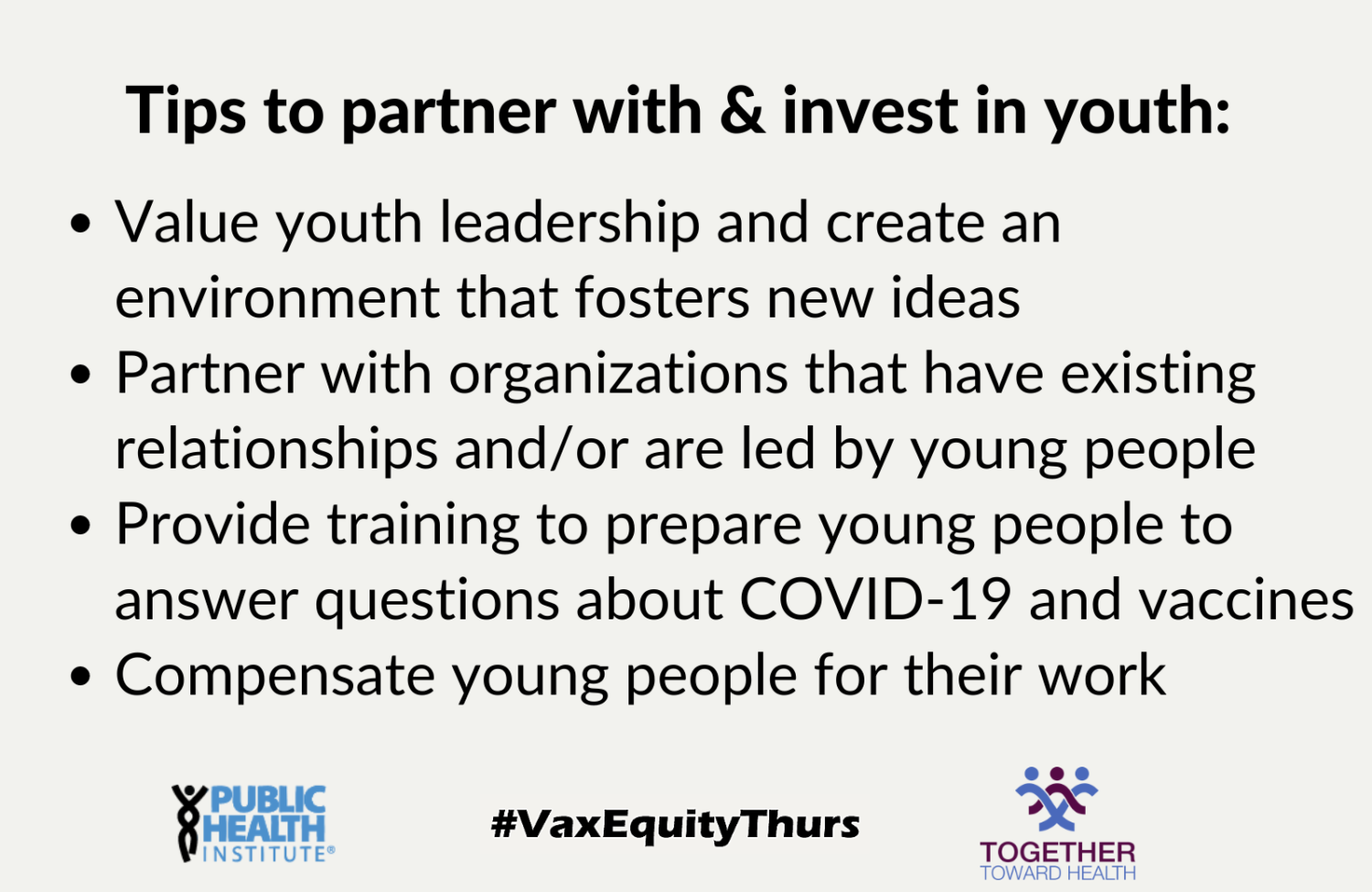
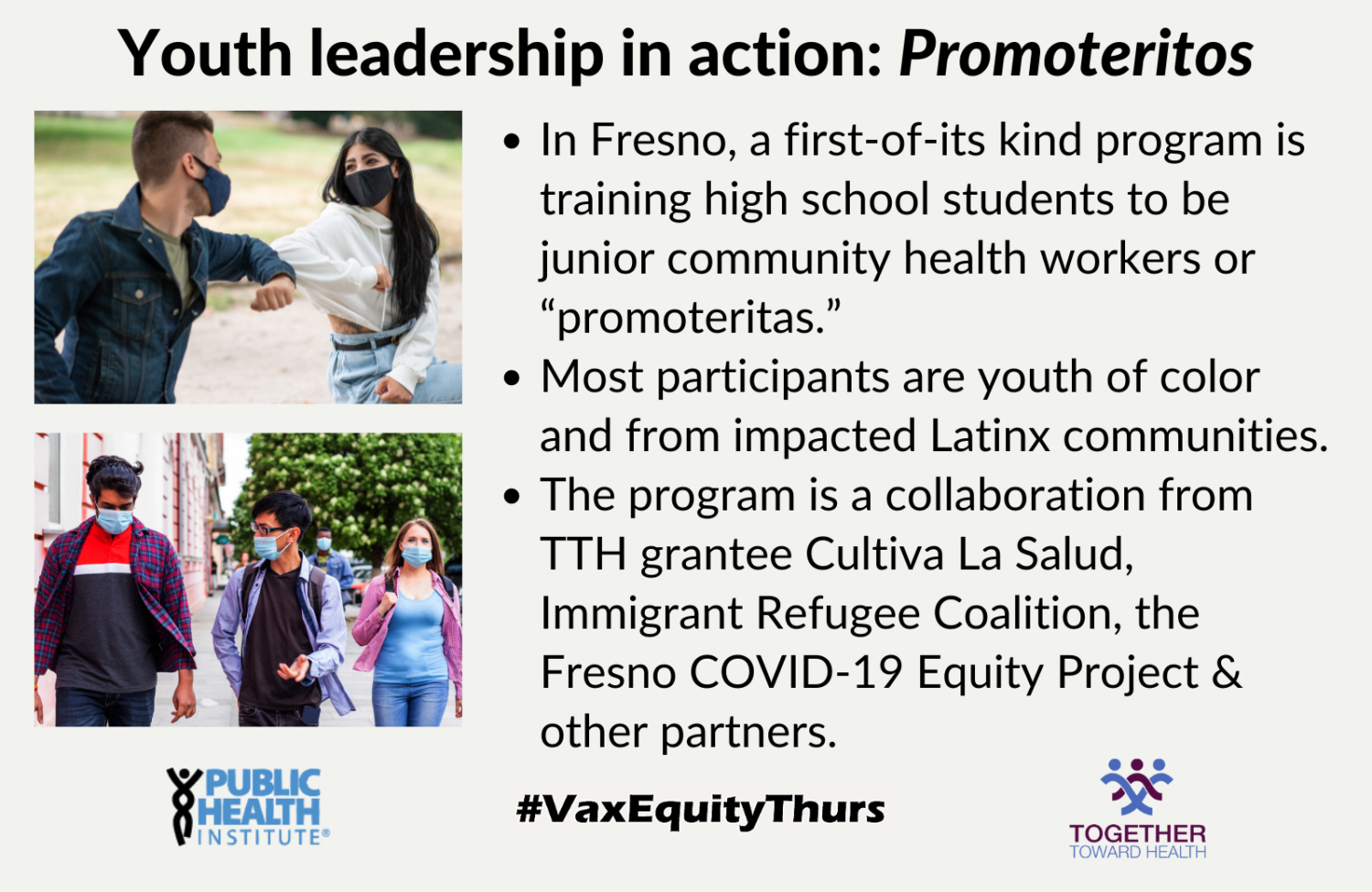
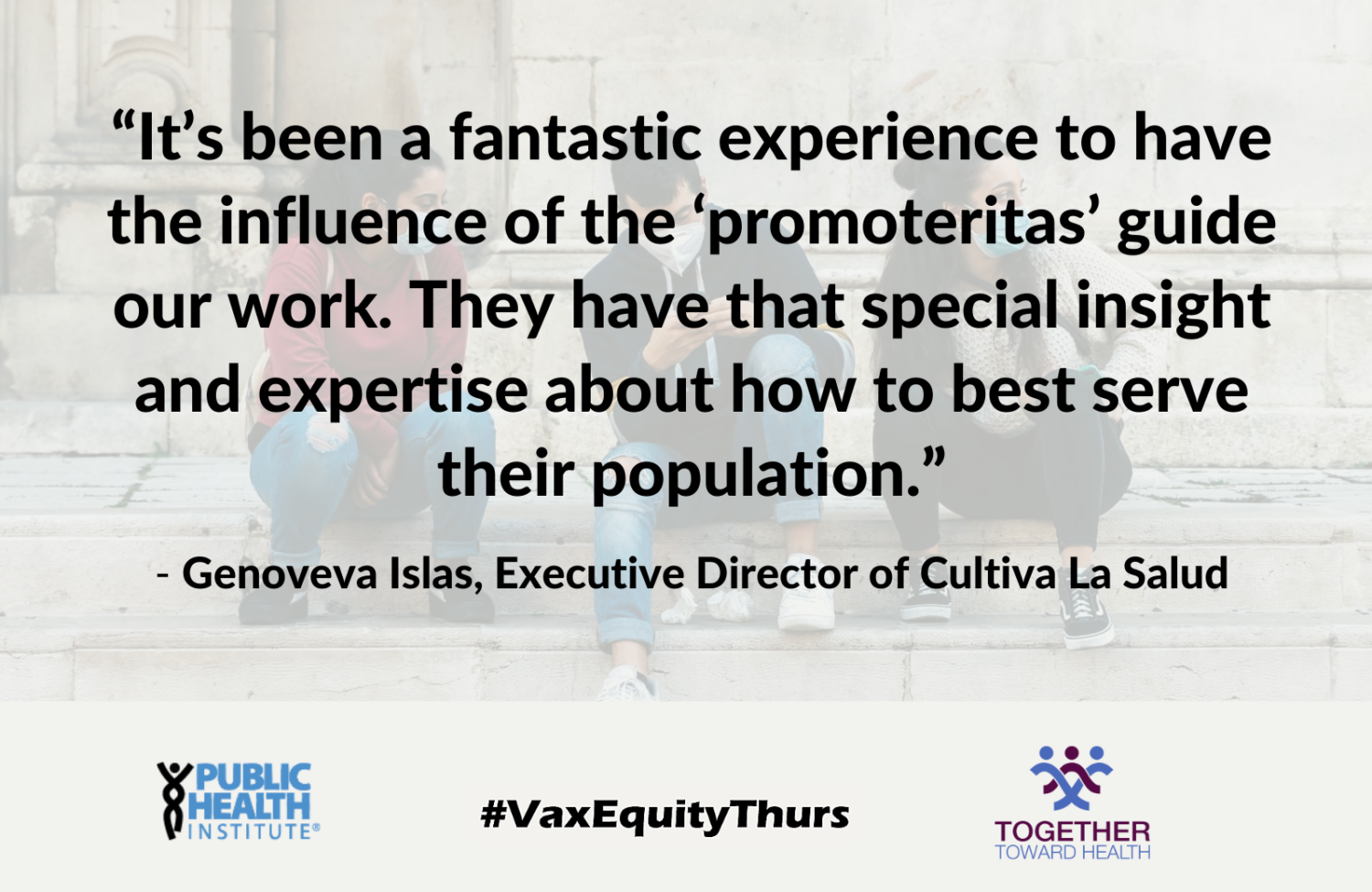
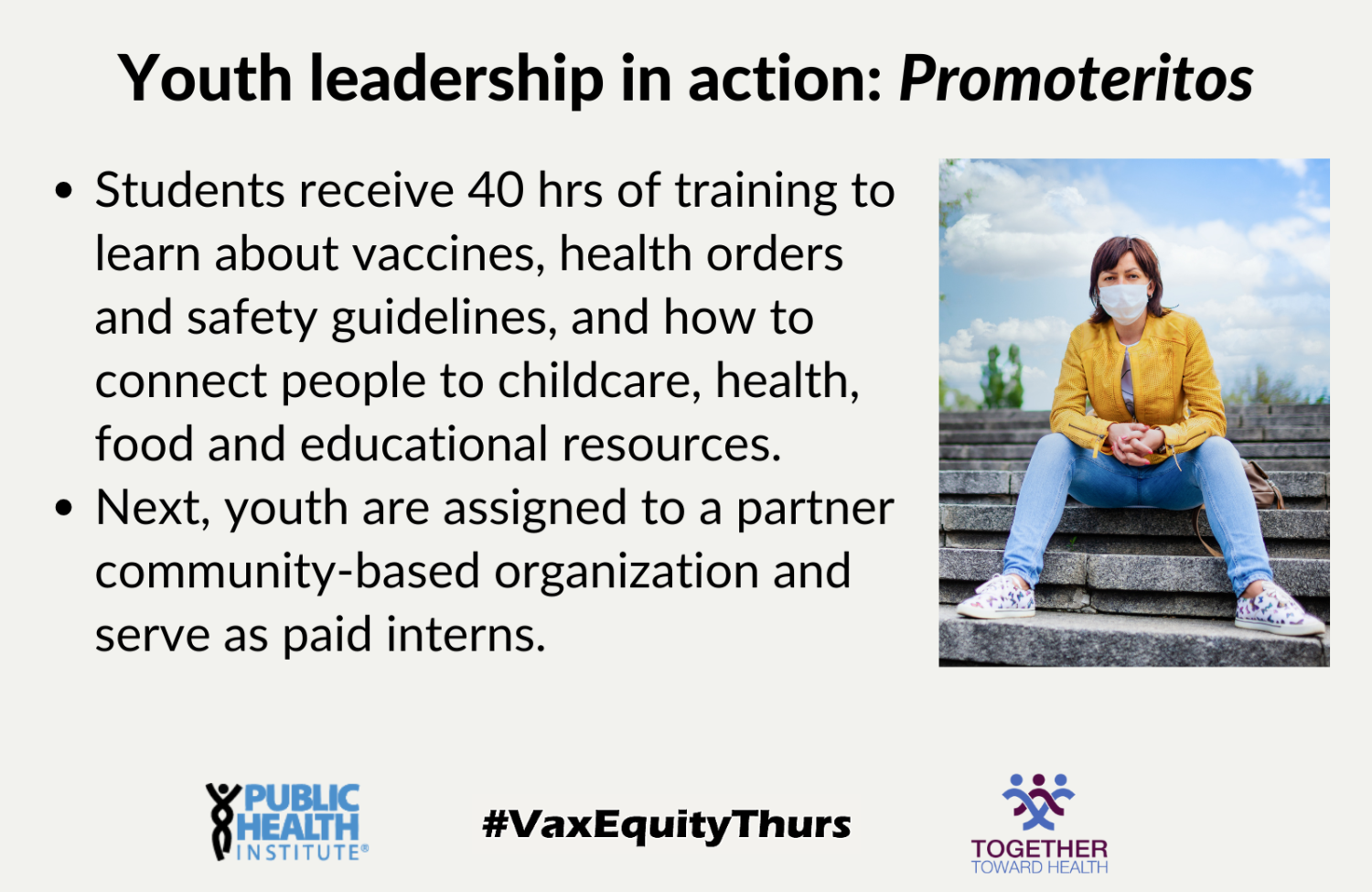
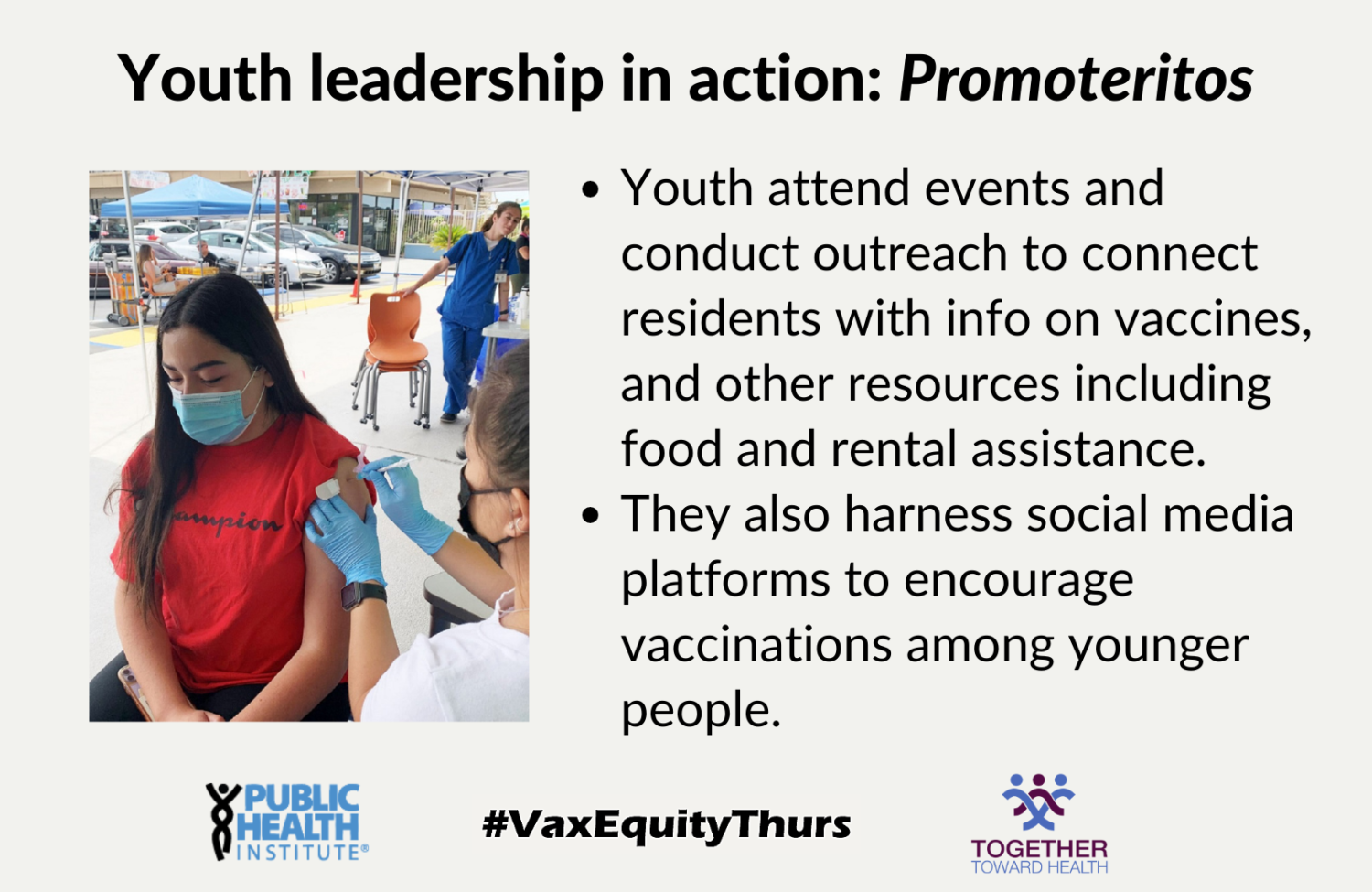
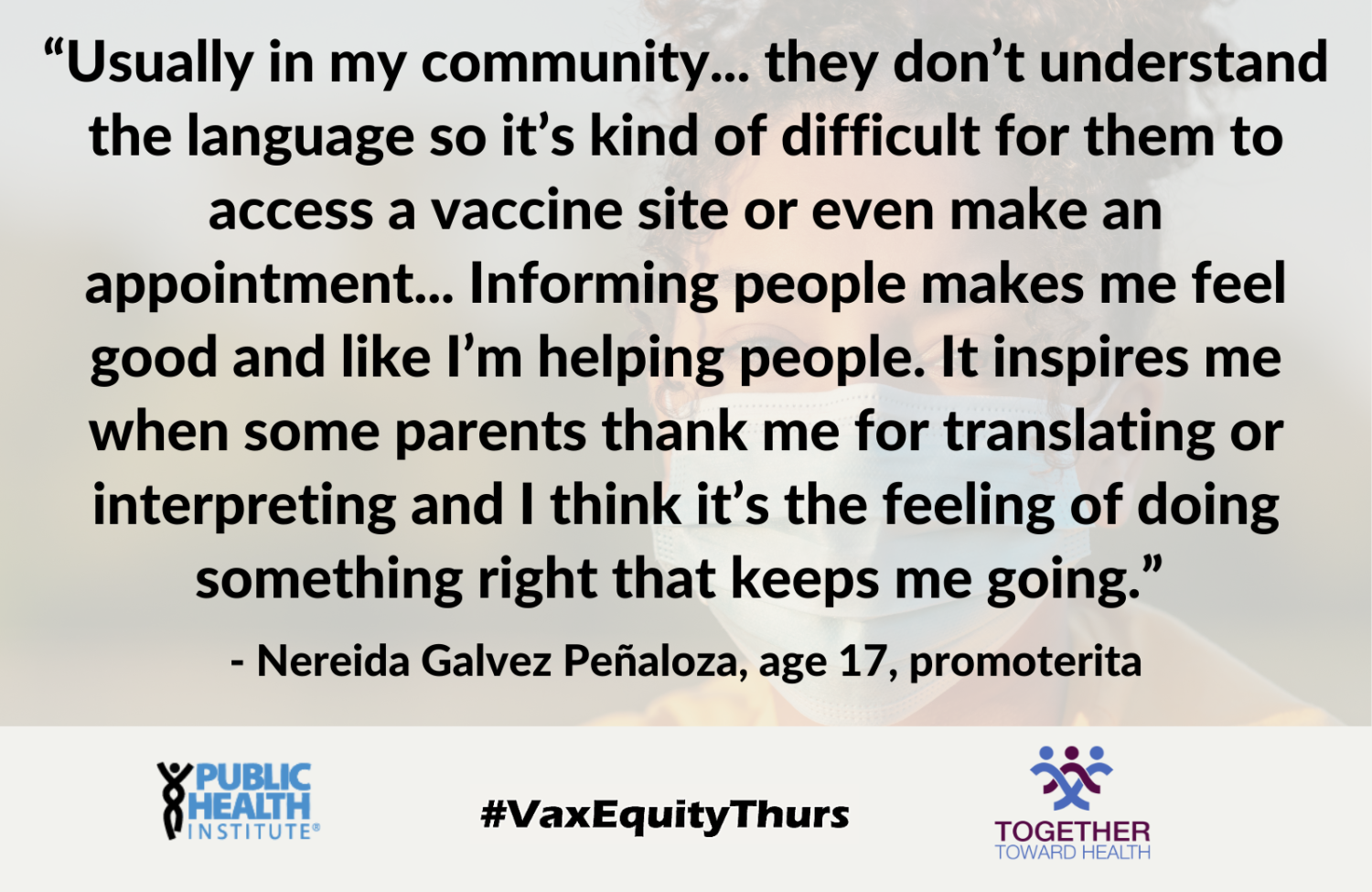
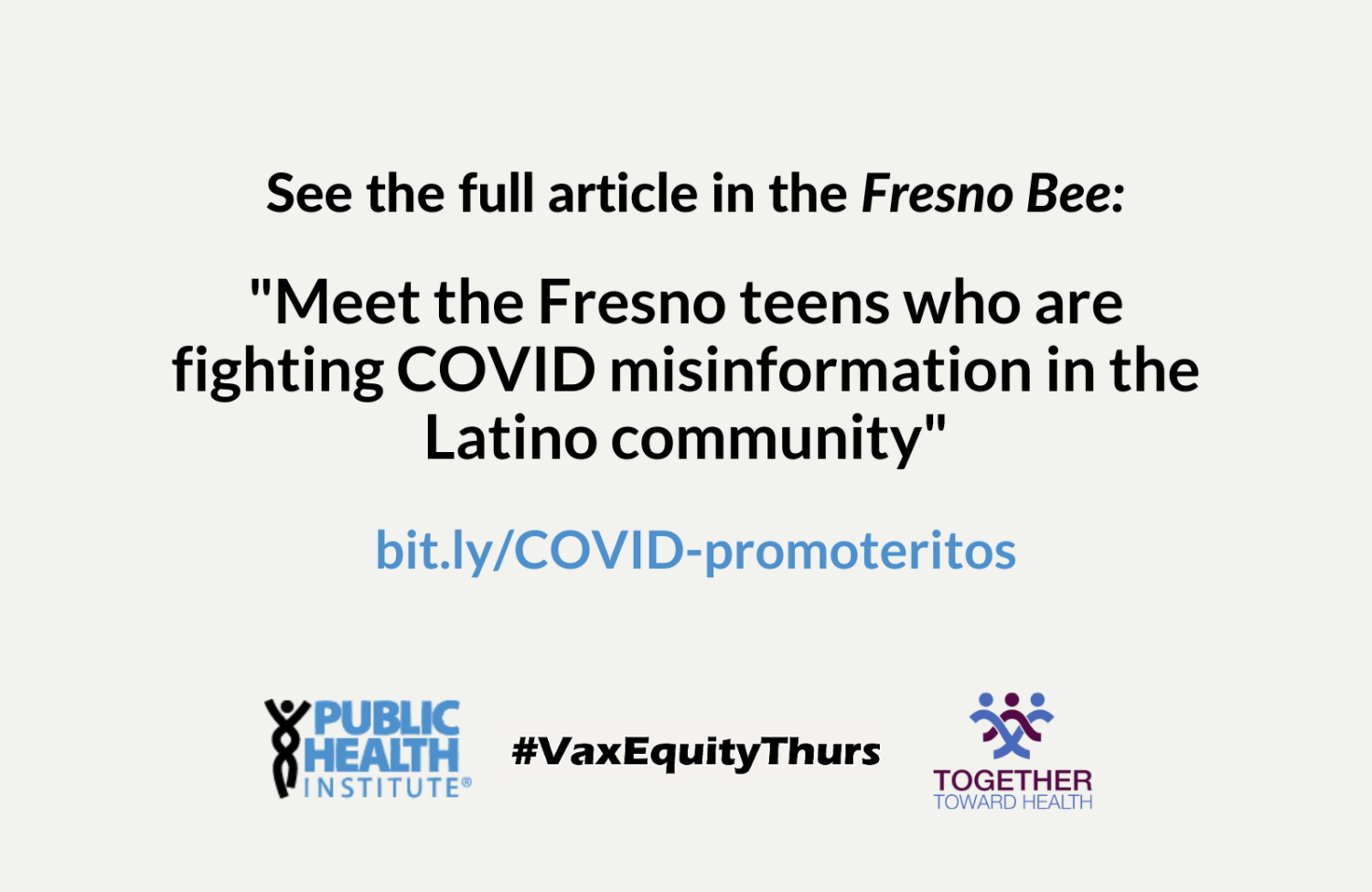
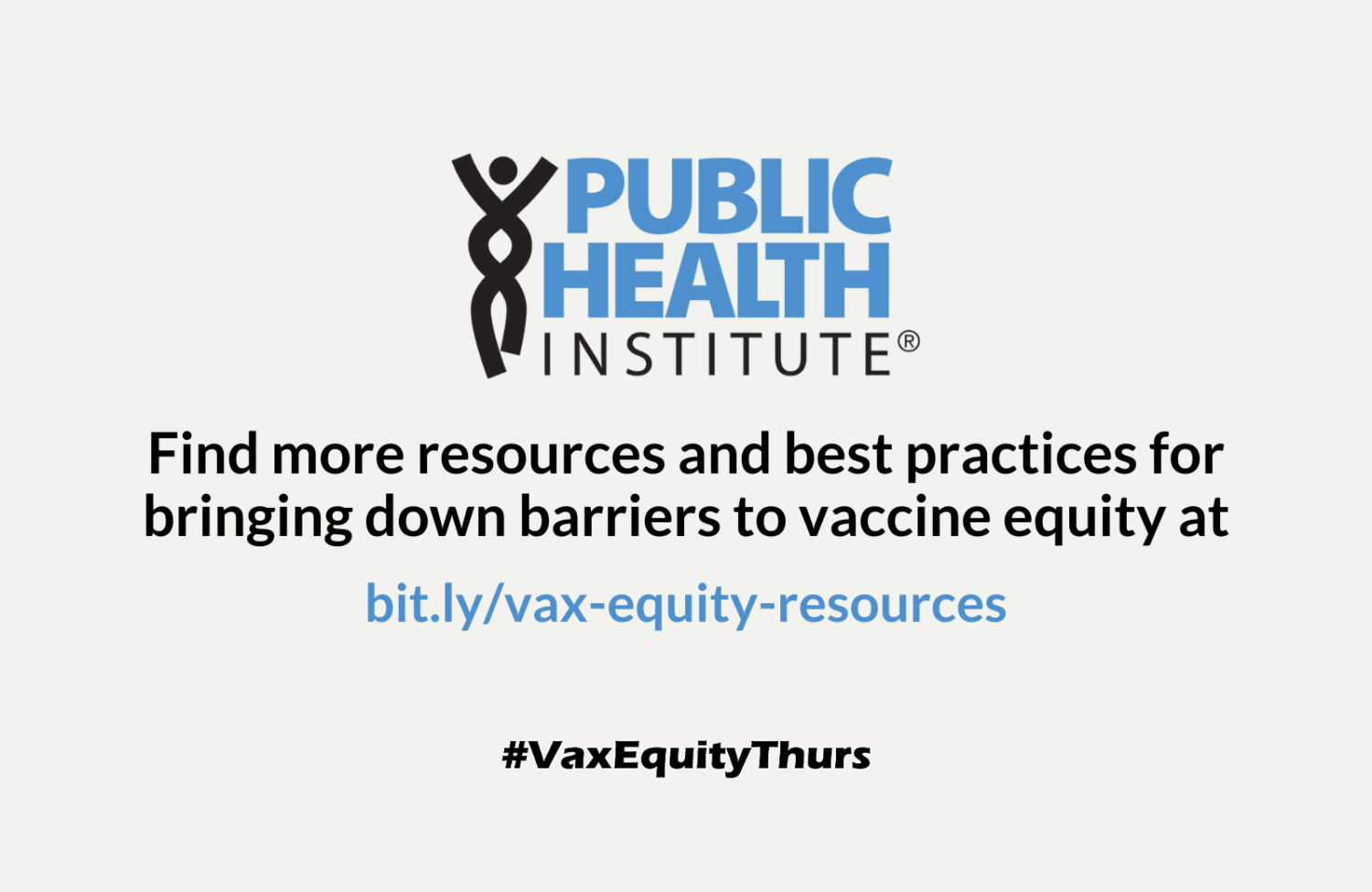
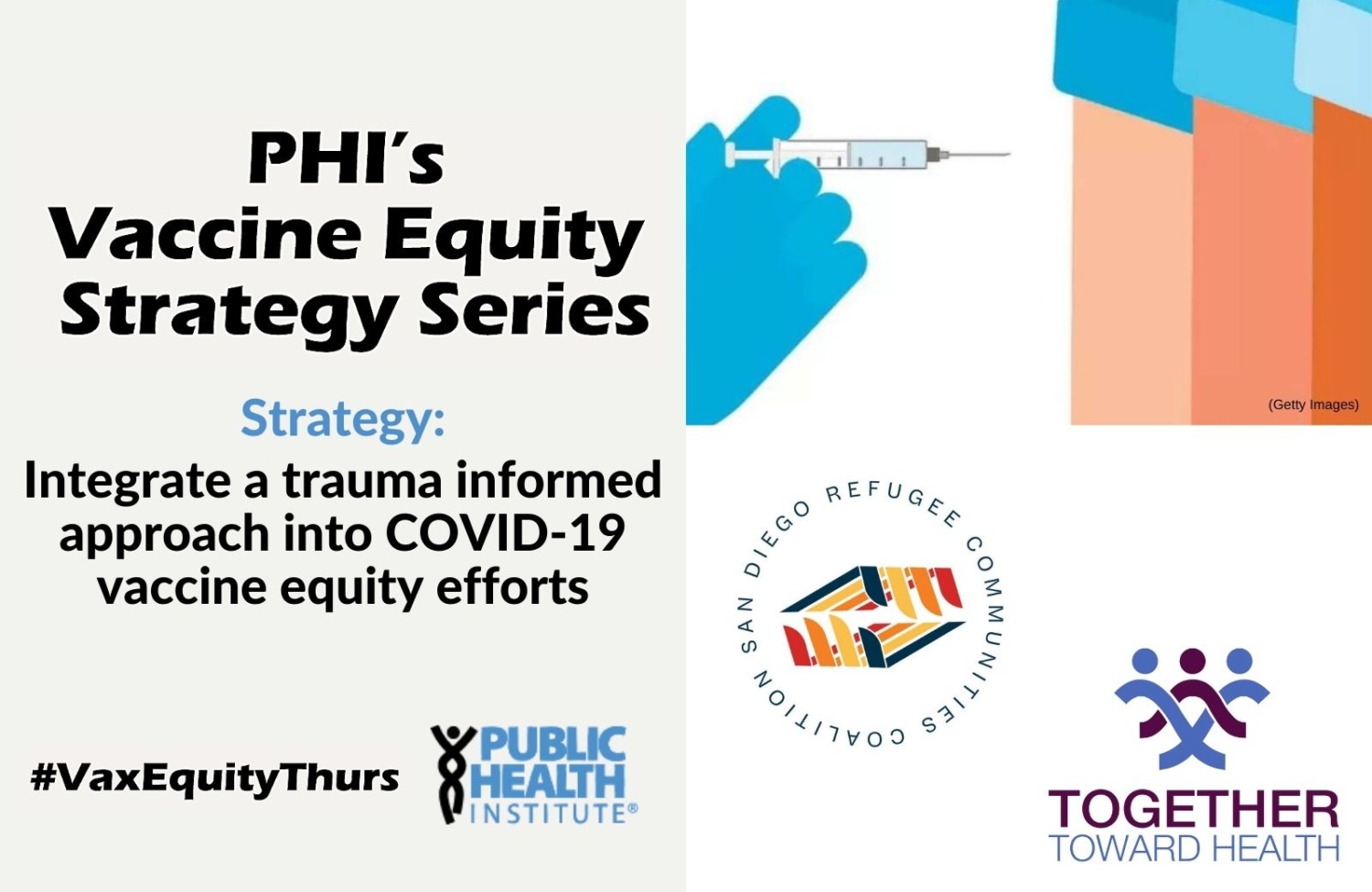
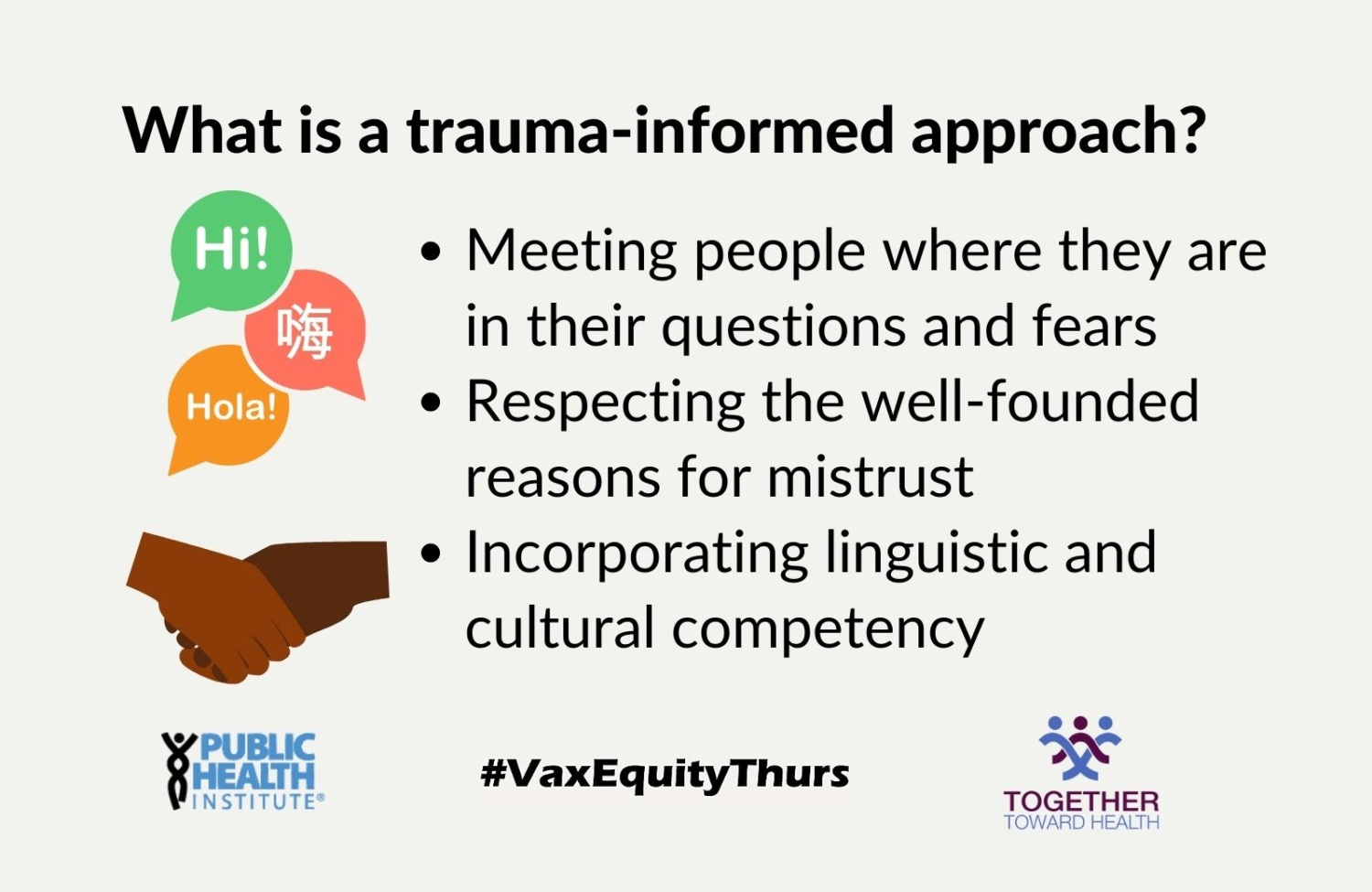
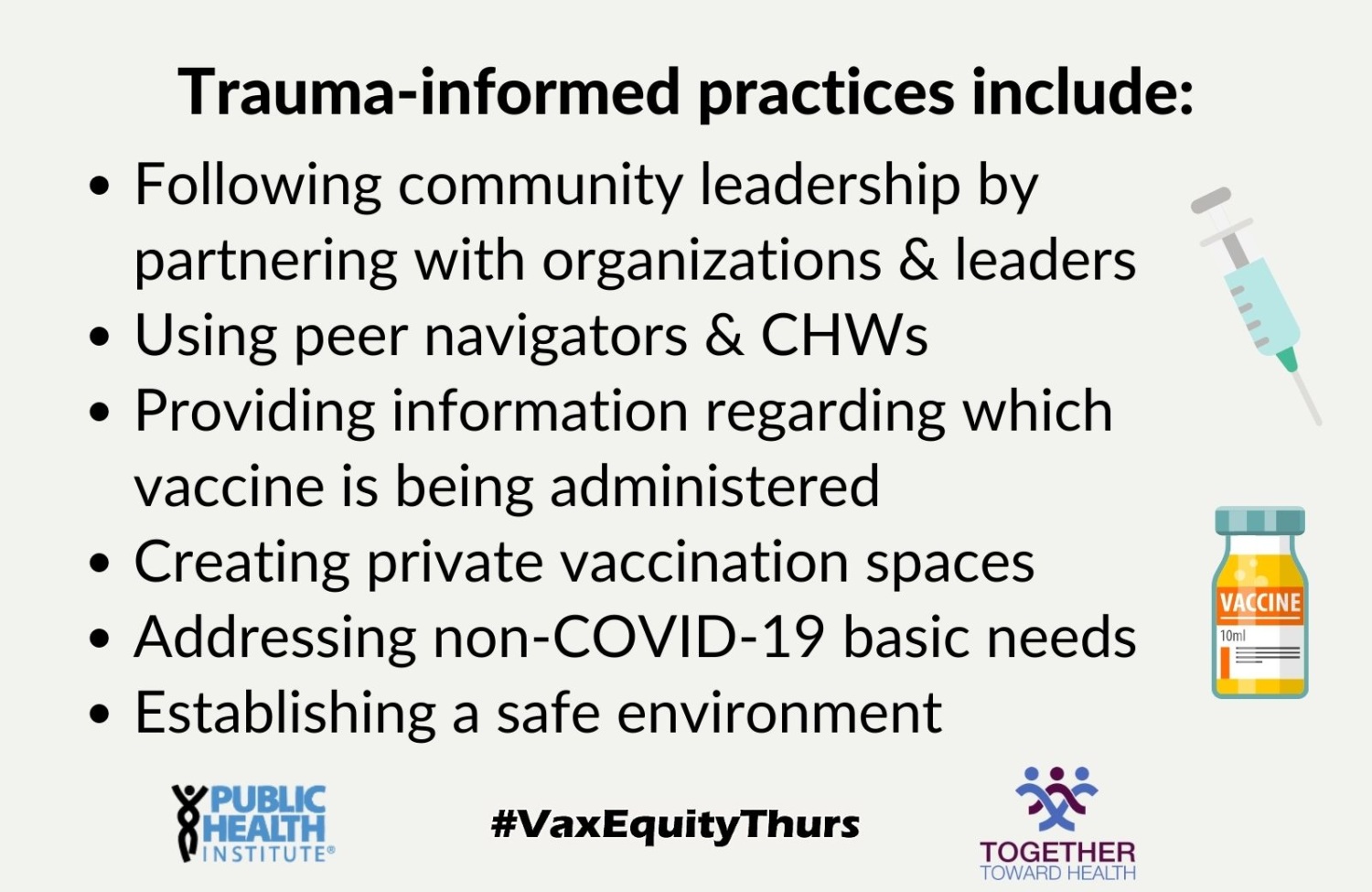
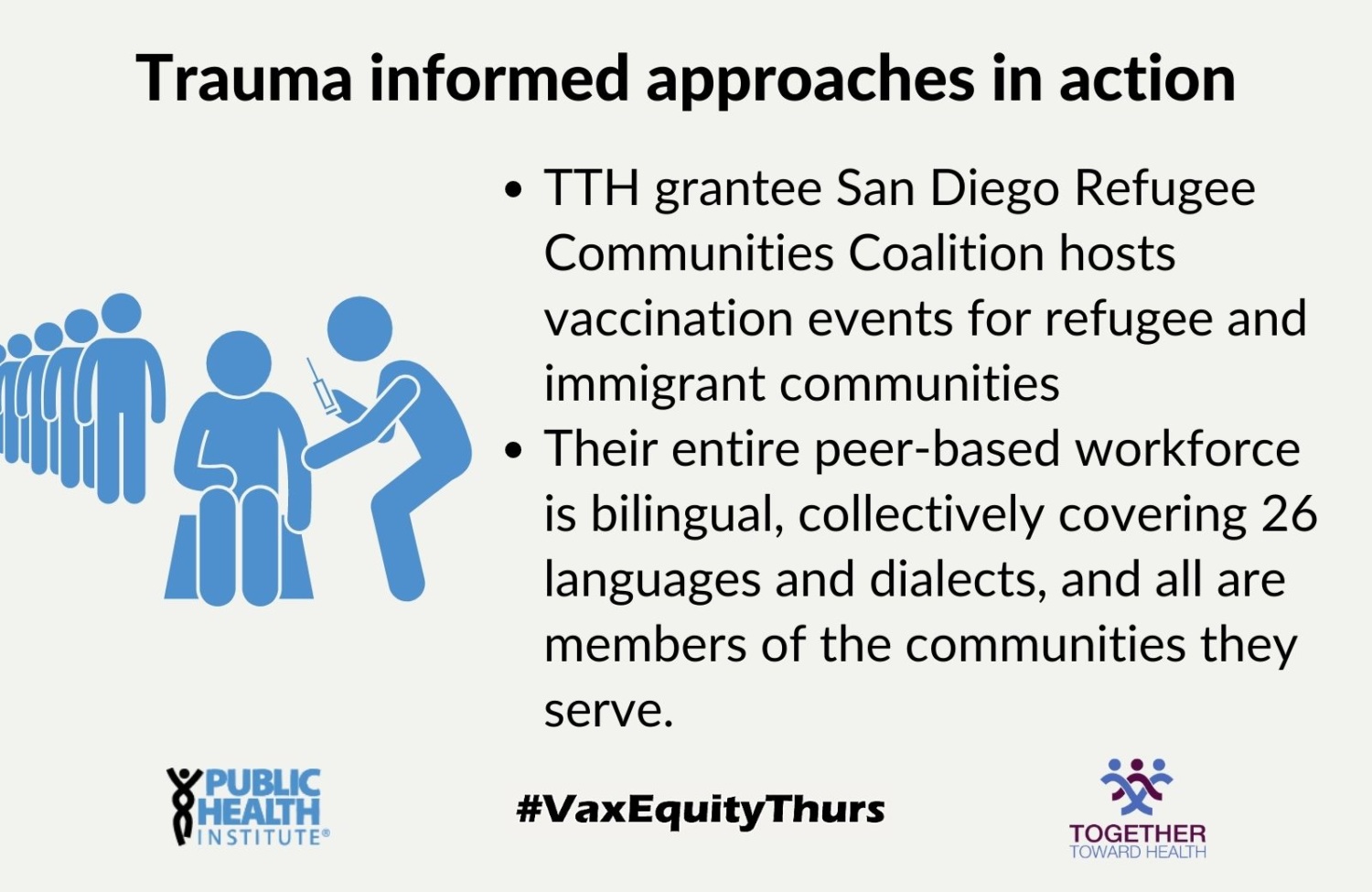
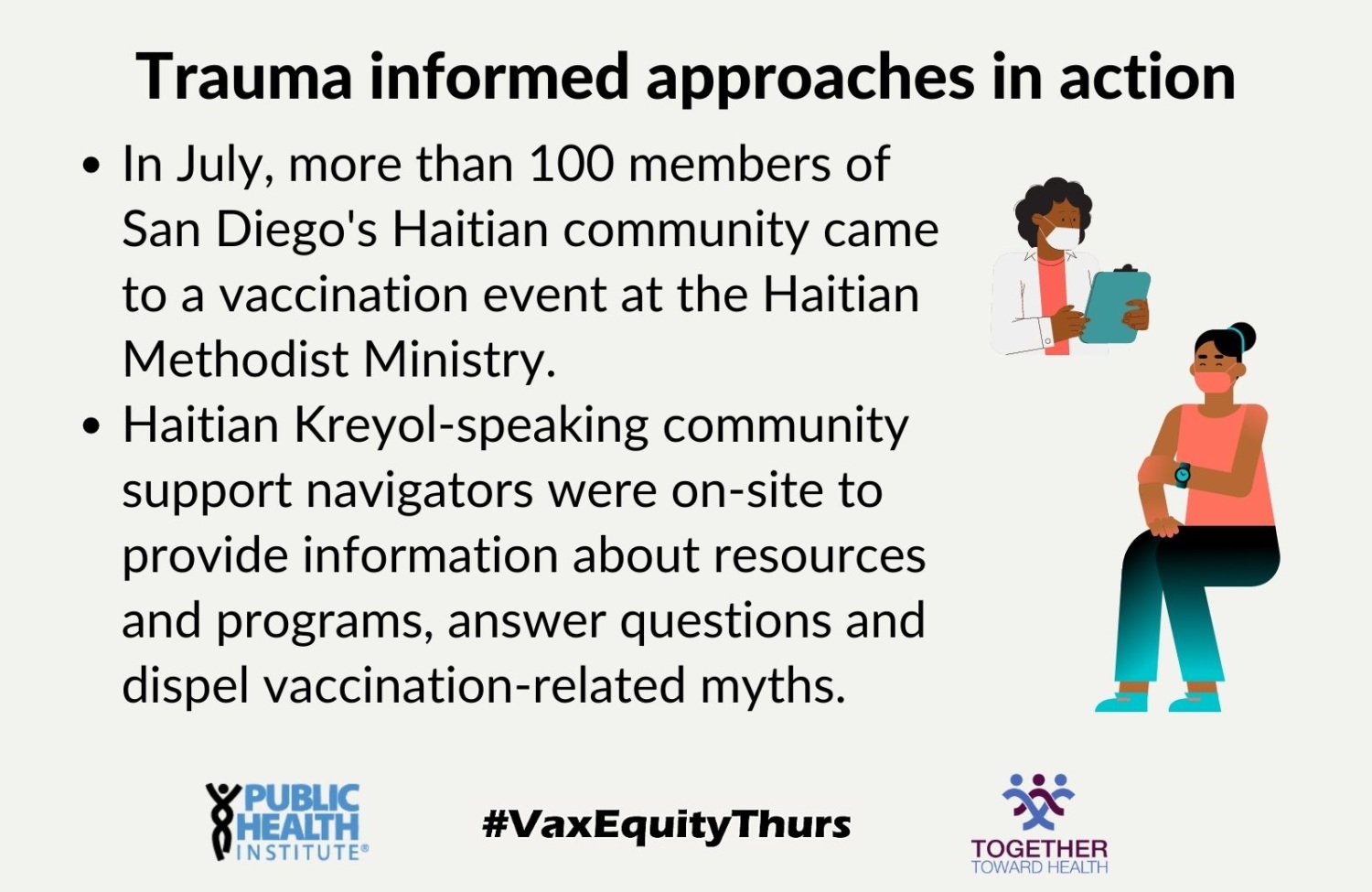
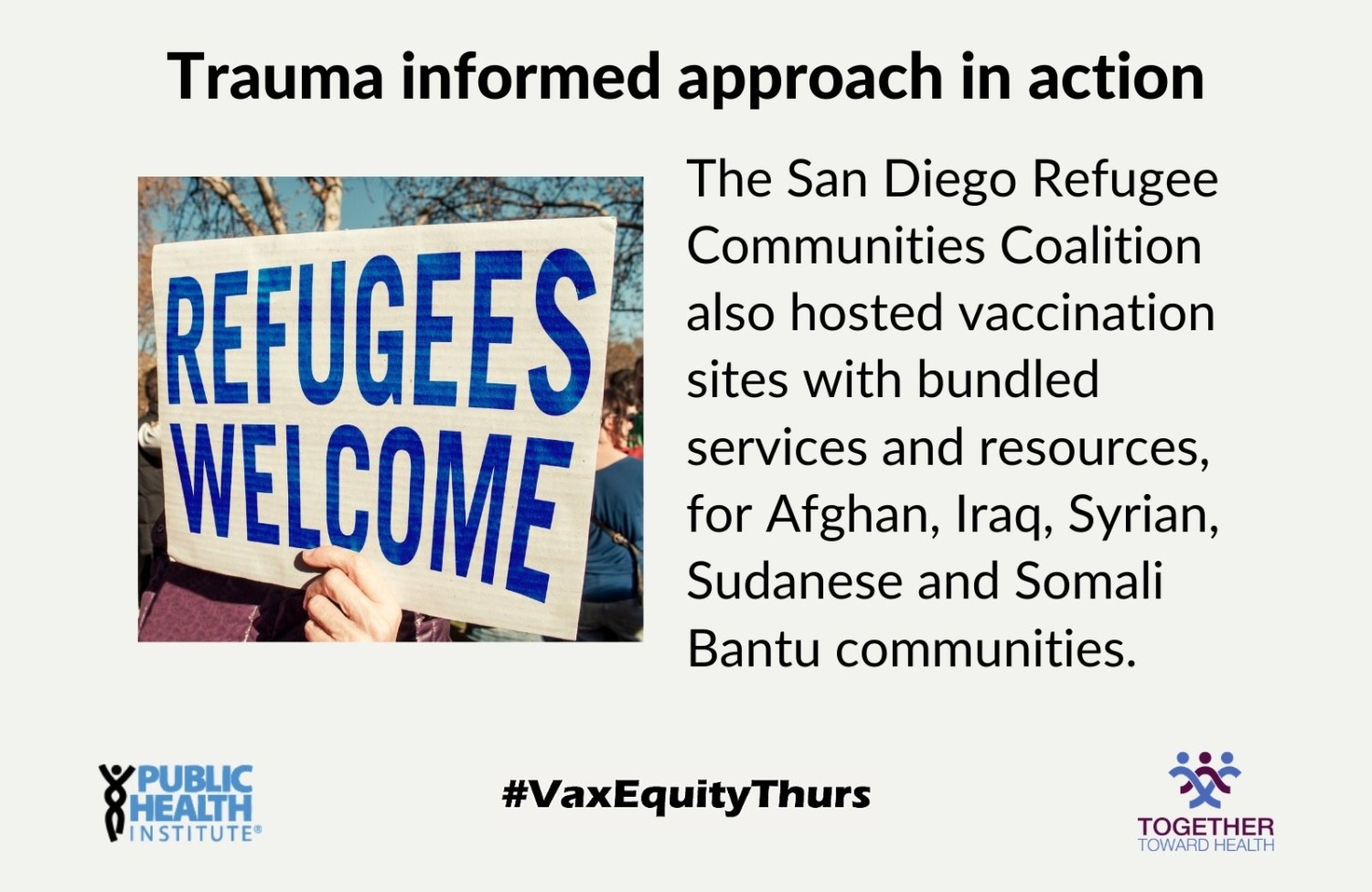
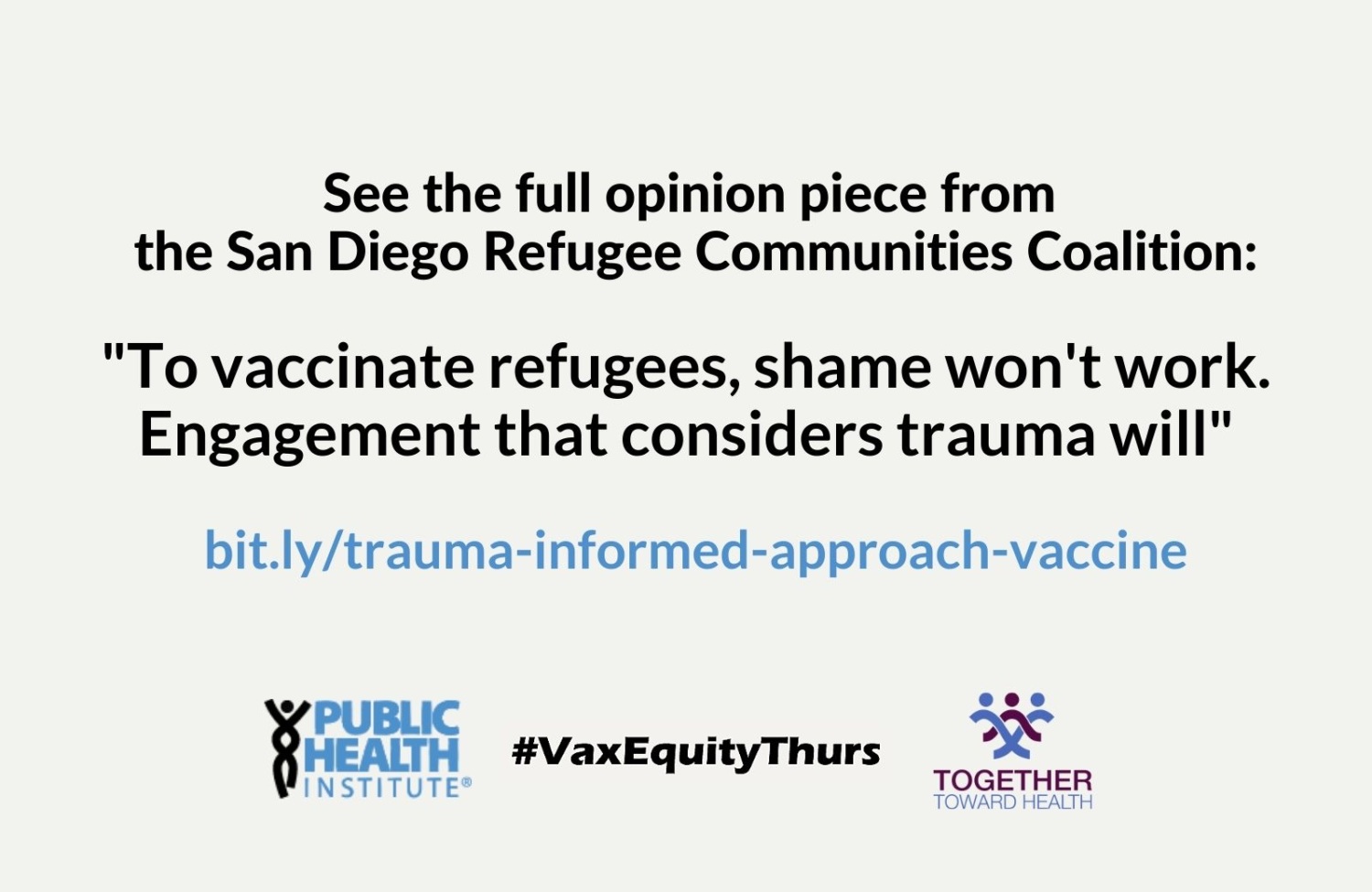
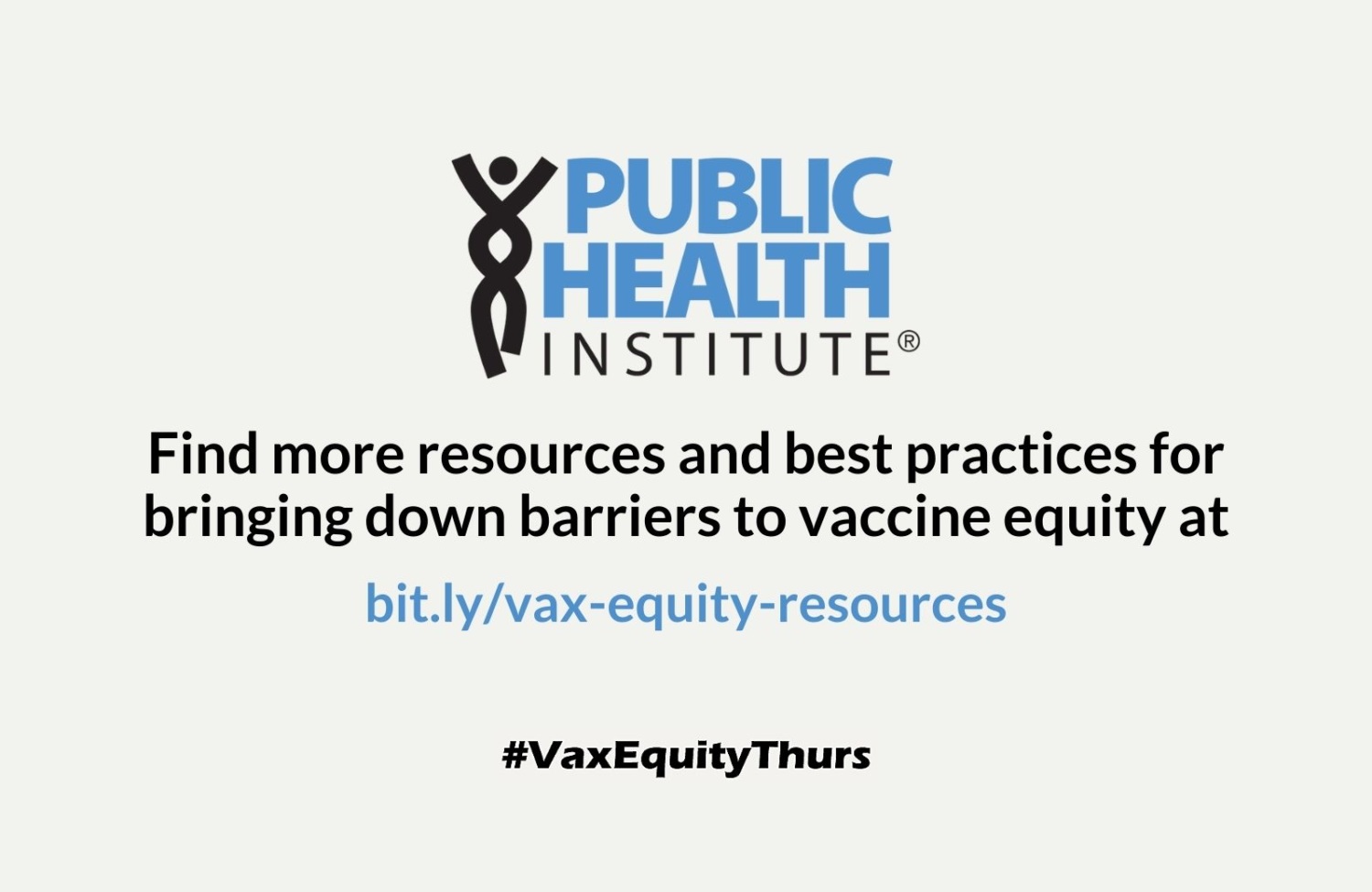
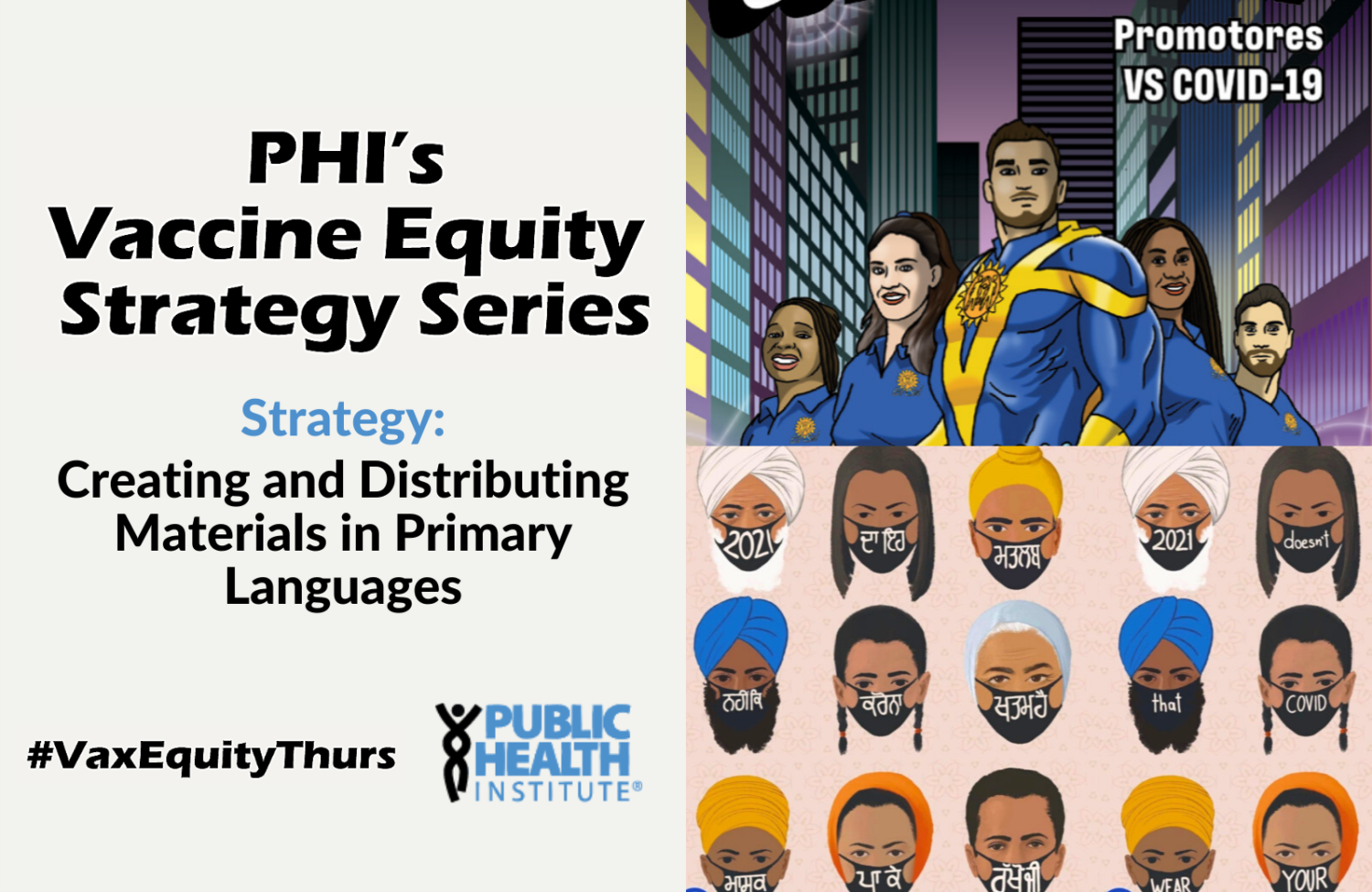
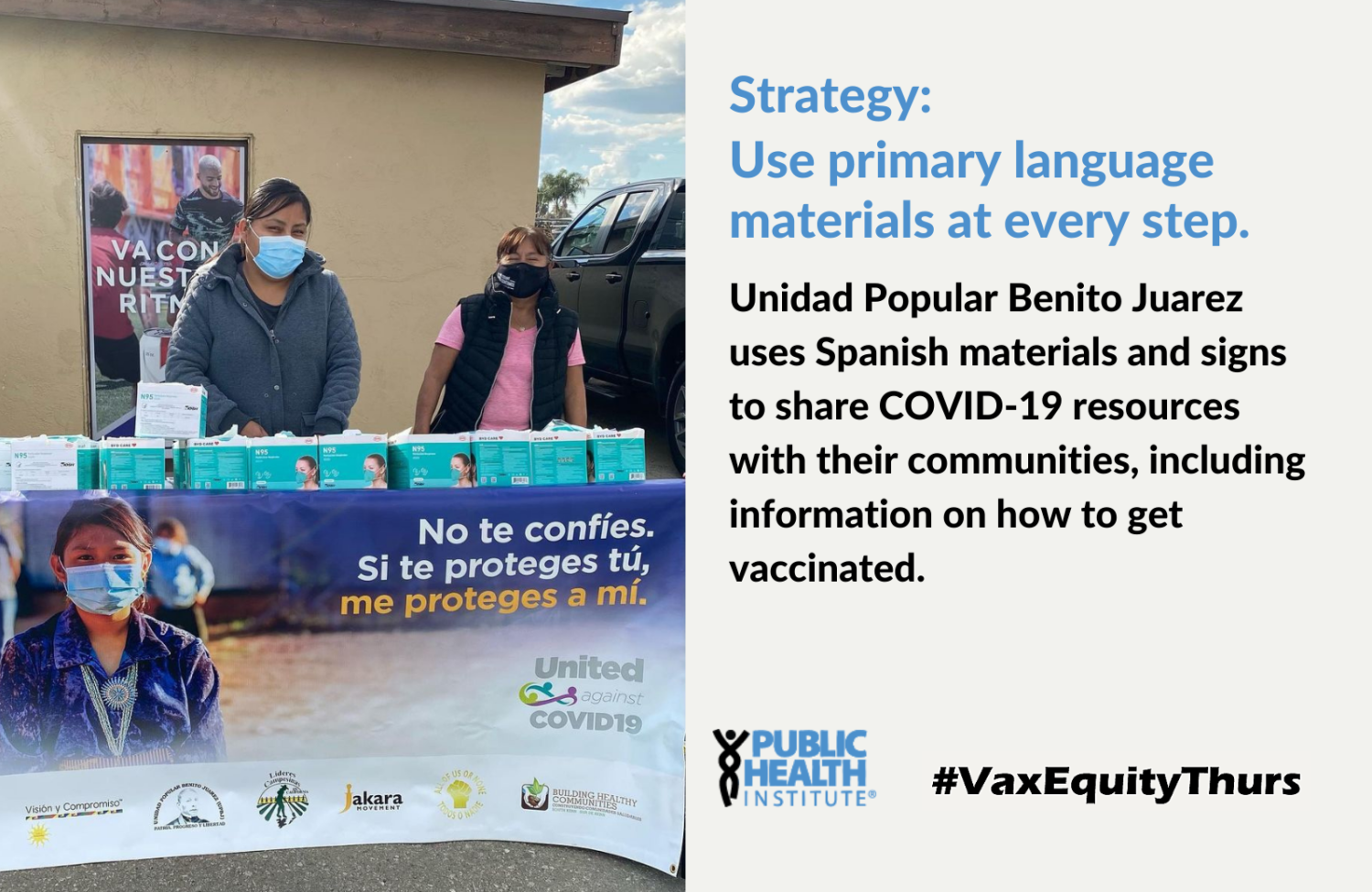
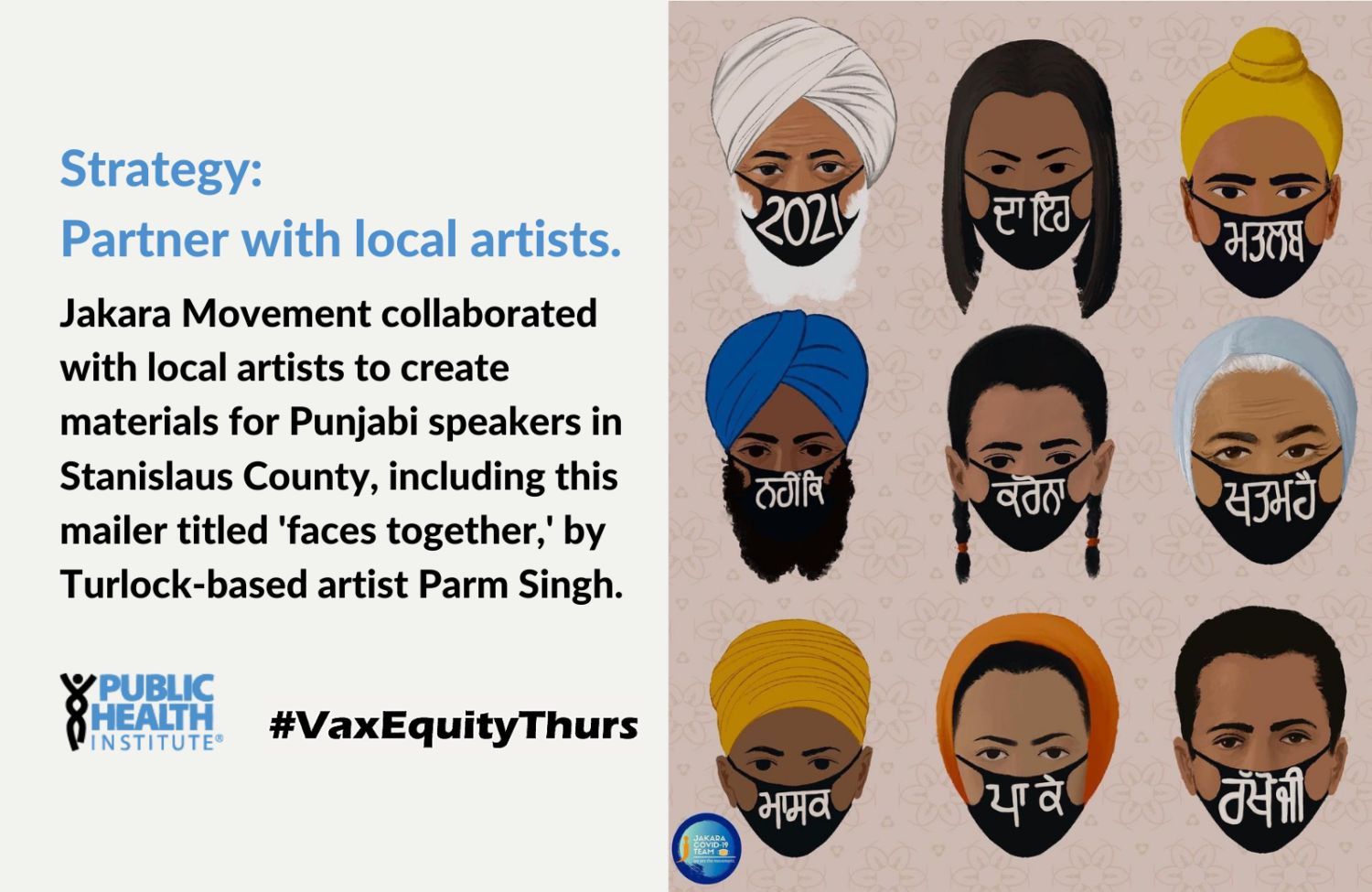
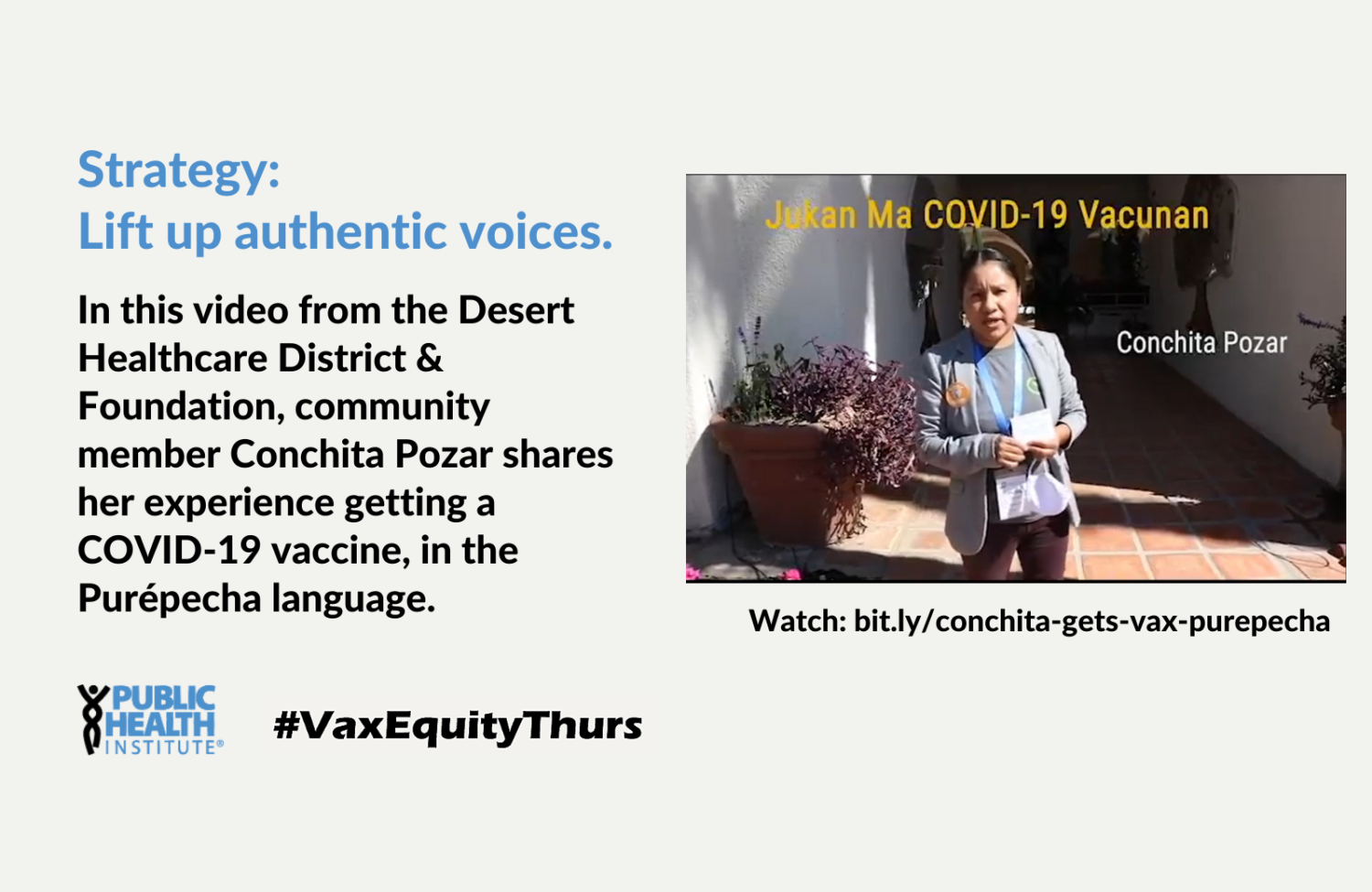
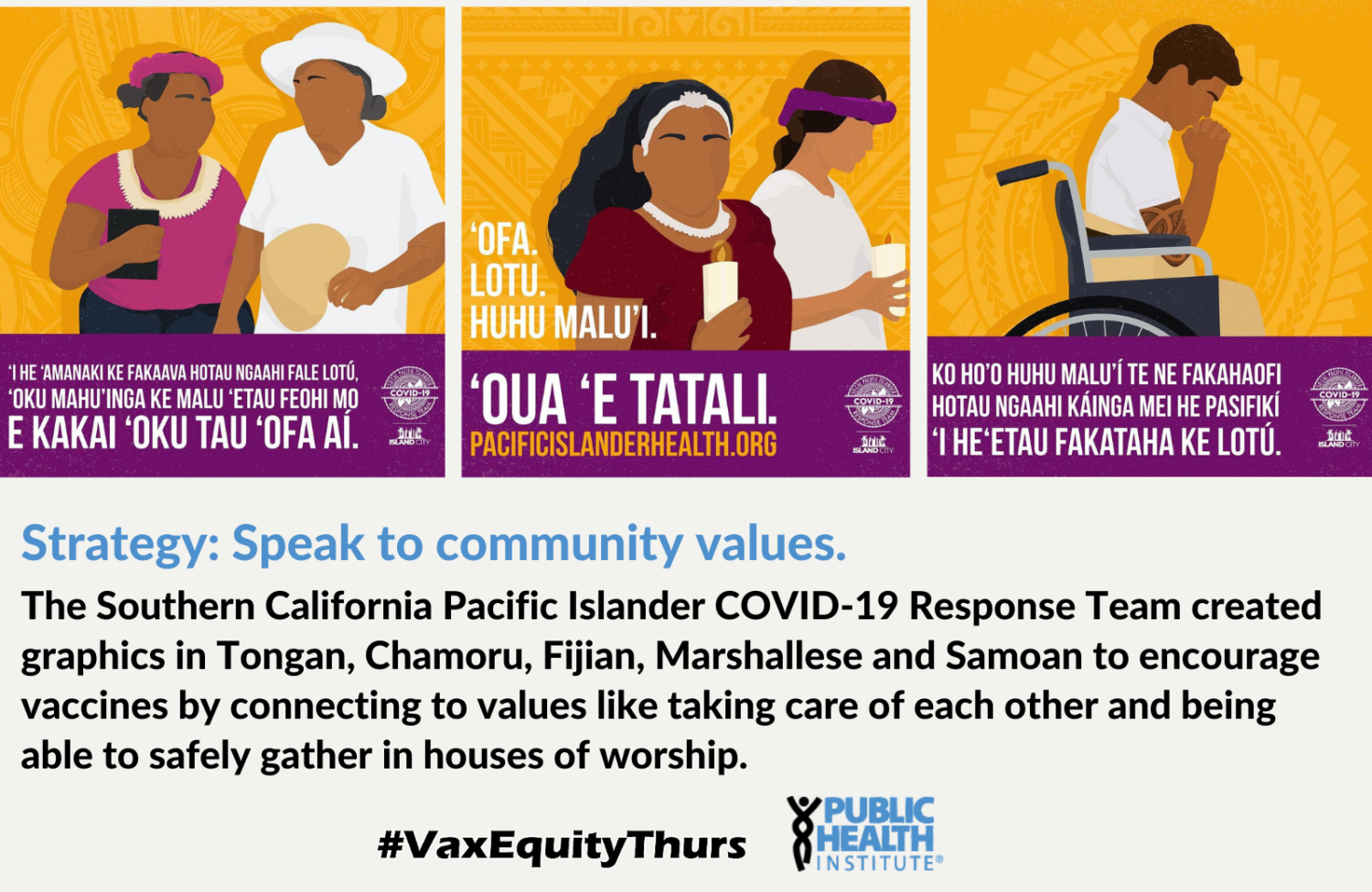
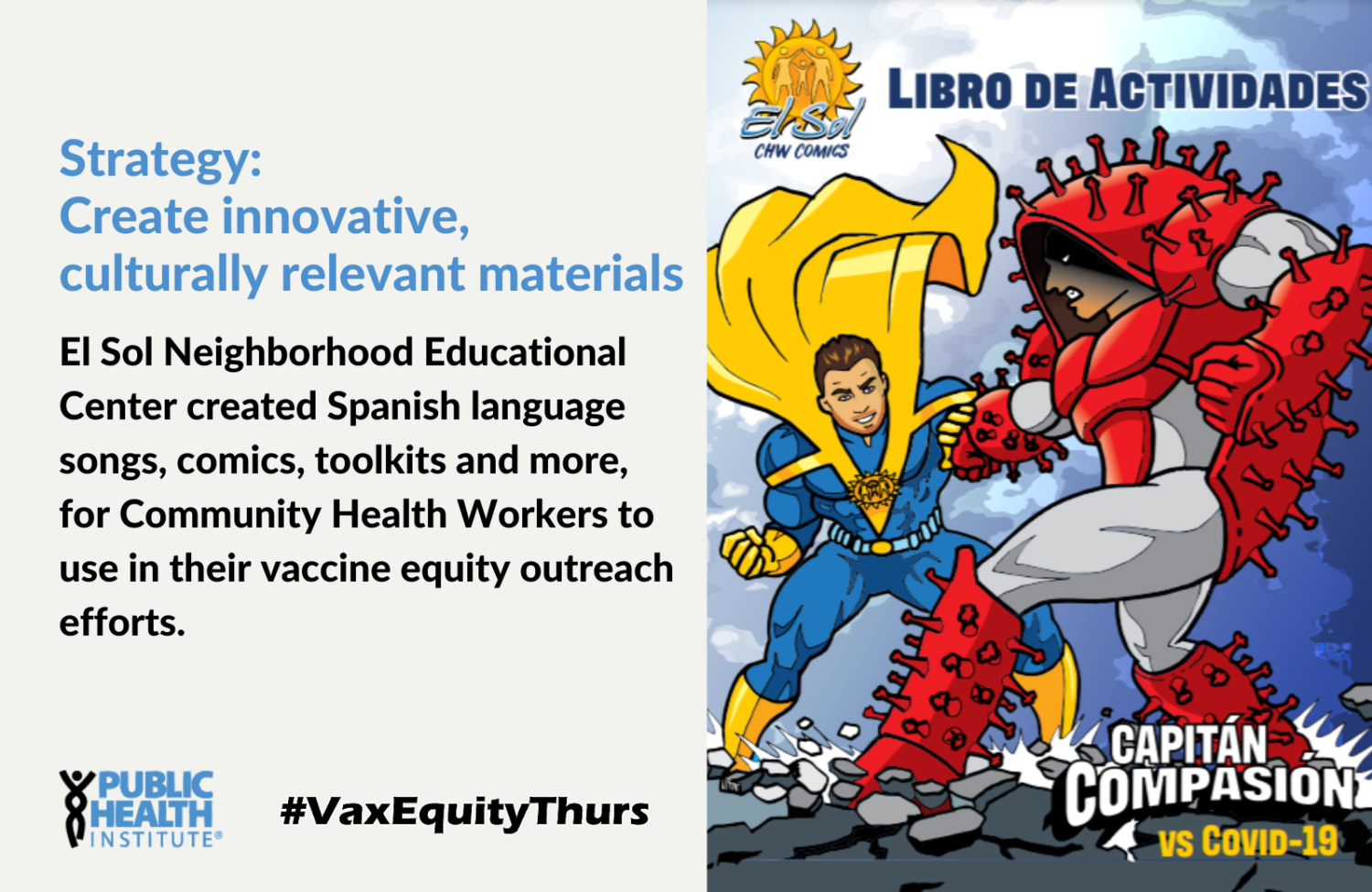
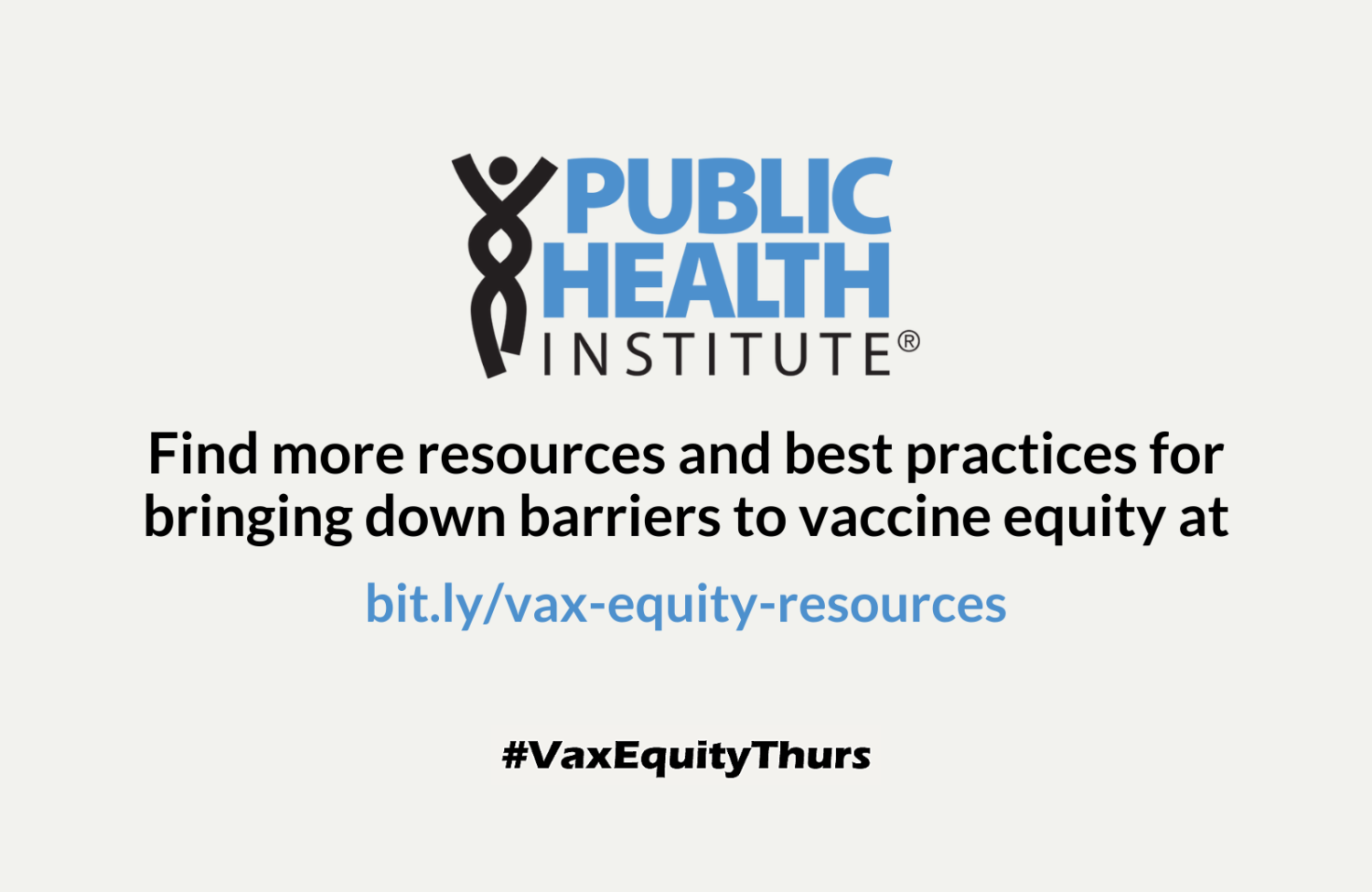

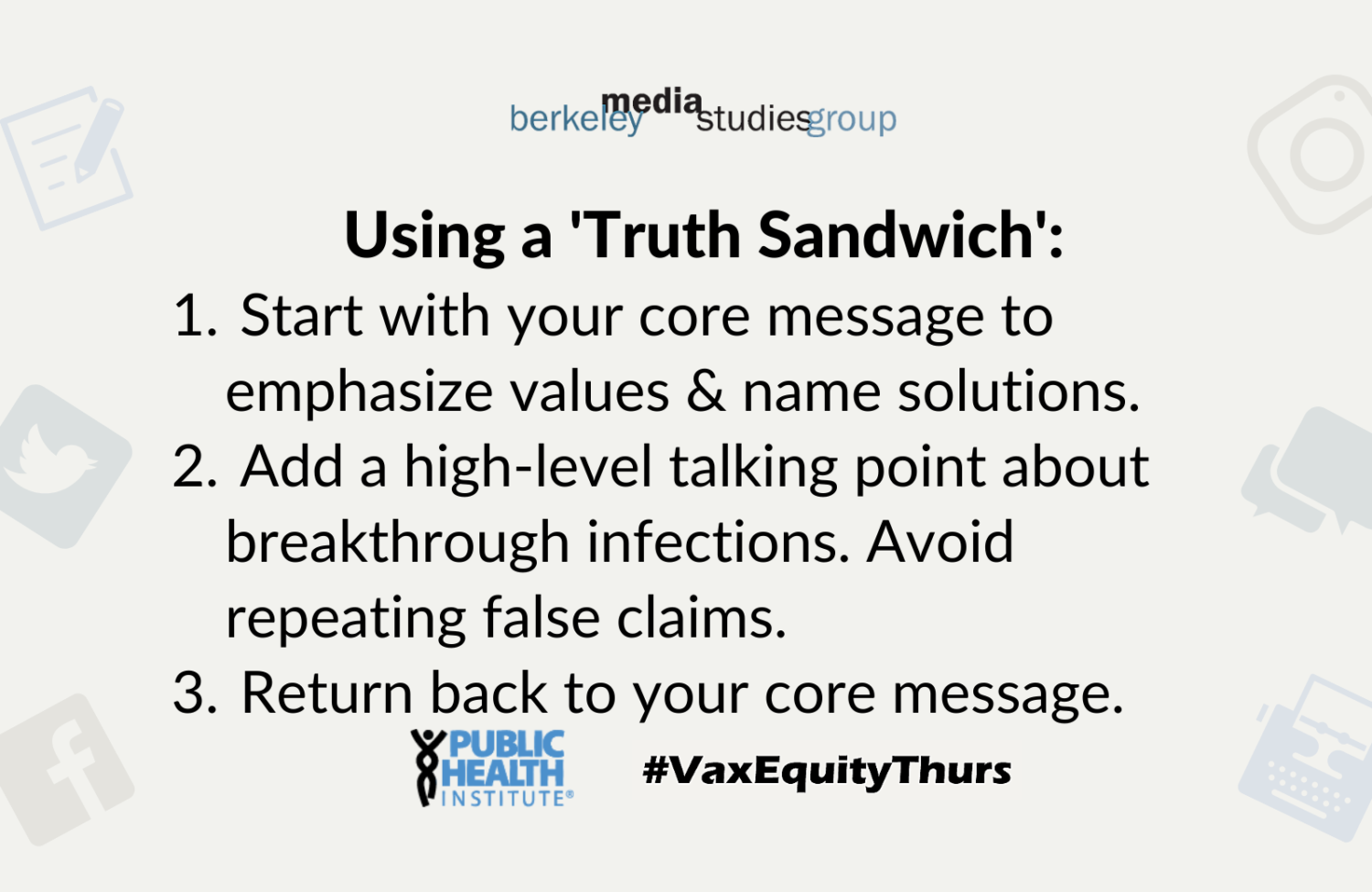
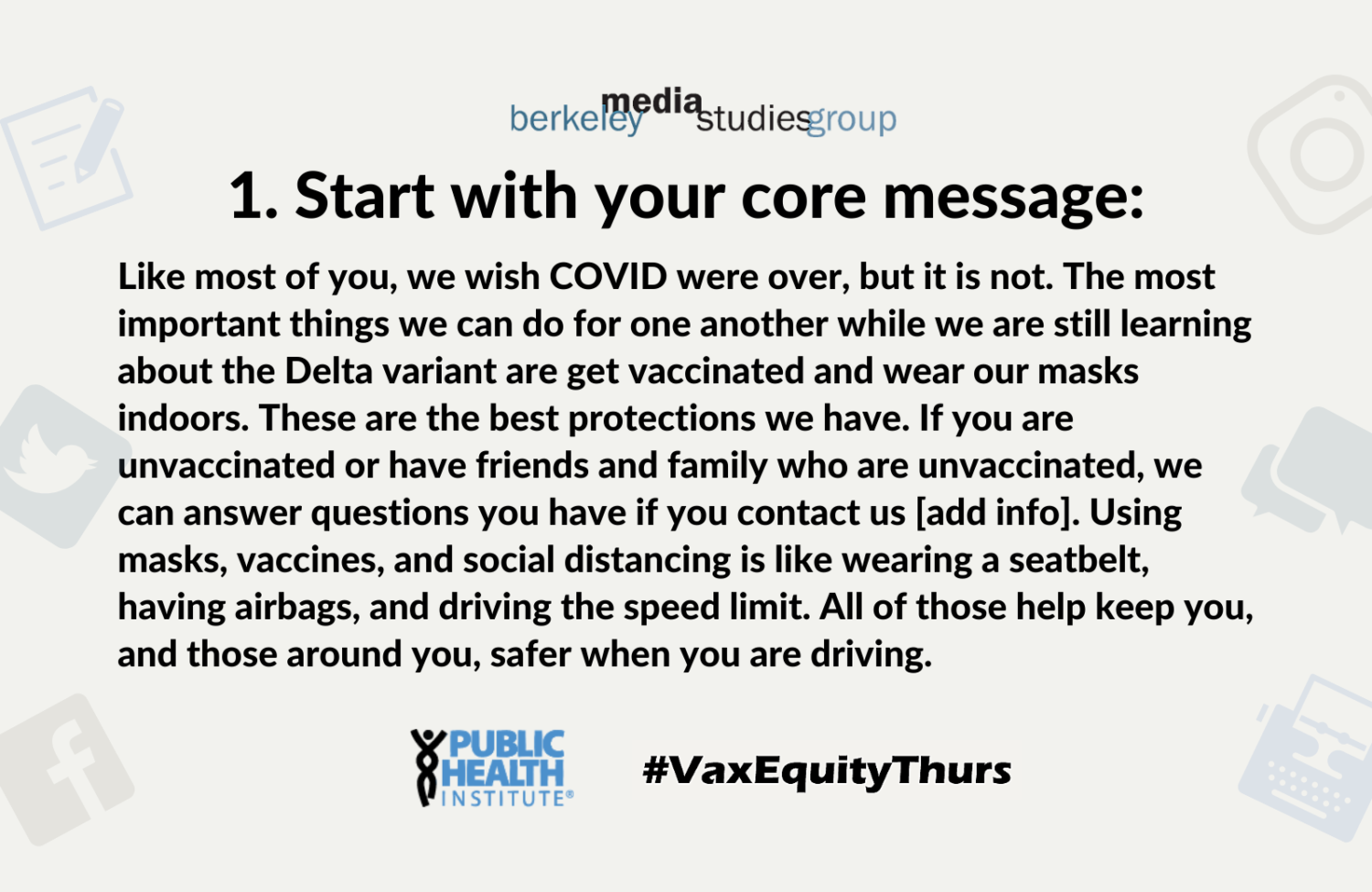
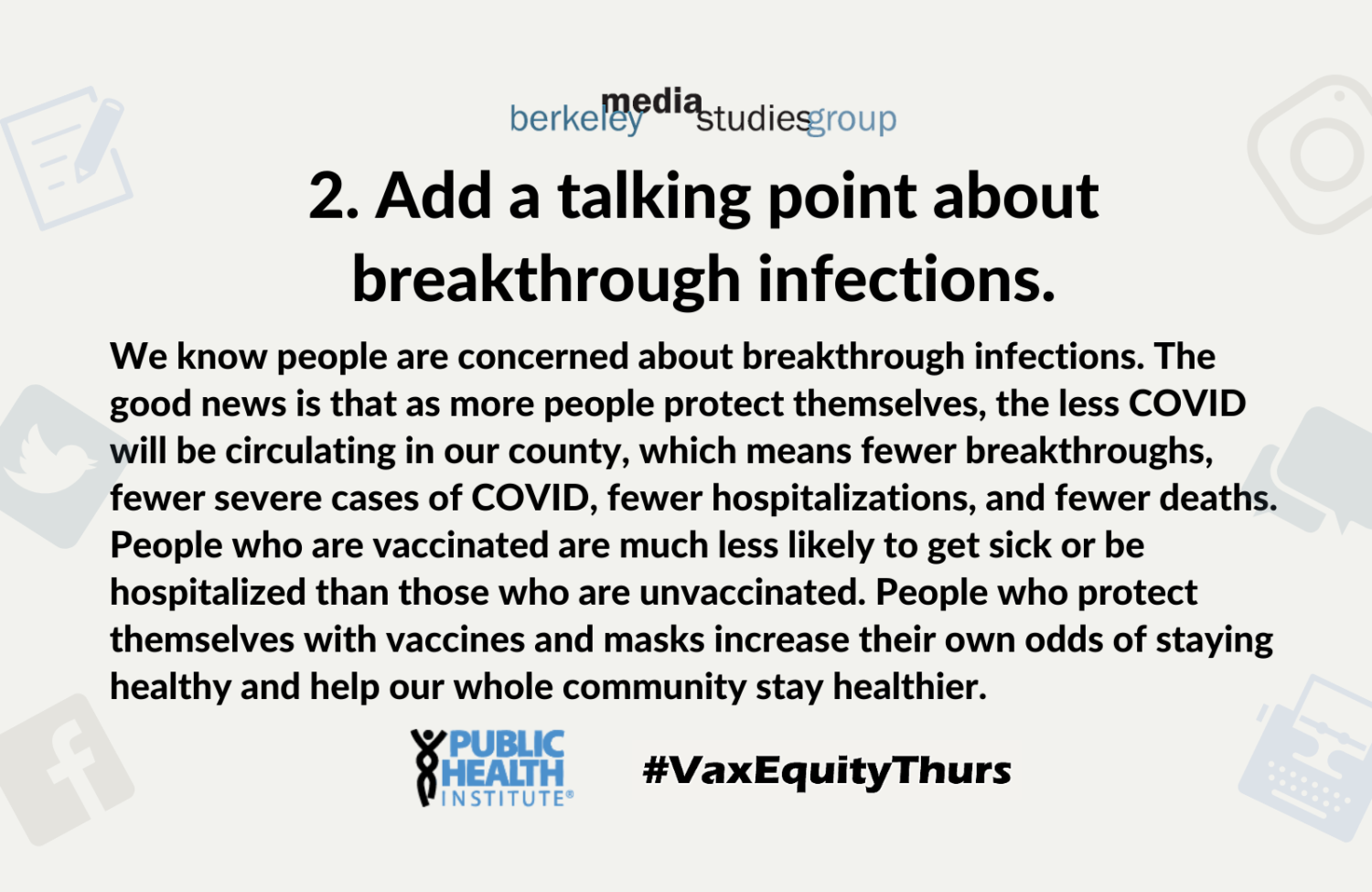
![3. Return back to your core message: We know these are challenging times, and we all hoped we would not be seeing the rise in cases. The vast majority of cases are in unvaccinated people, so we want to reach people who need vaccines, answer their questions, and get everyone vaccinated who wants one. In our county, we take care of one another by wearing masks indoors and [add your county’s specific recommendations if they include other protections].](https://www.phi.org/wp-content/uploads/2021/09/5-1-1500x975.png)
